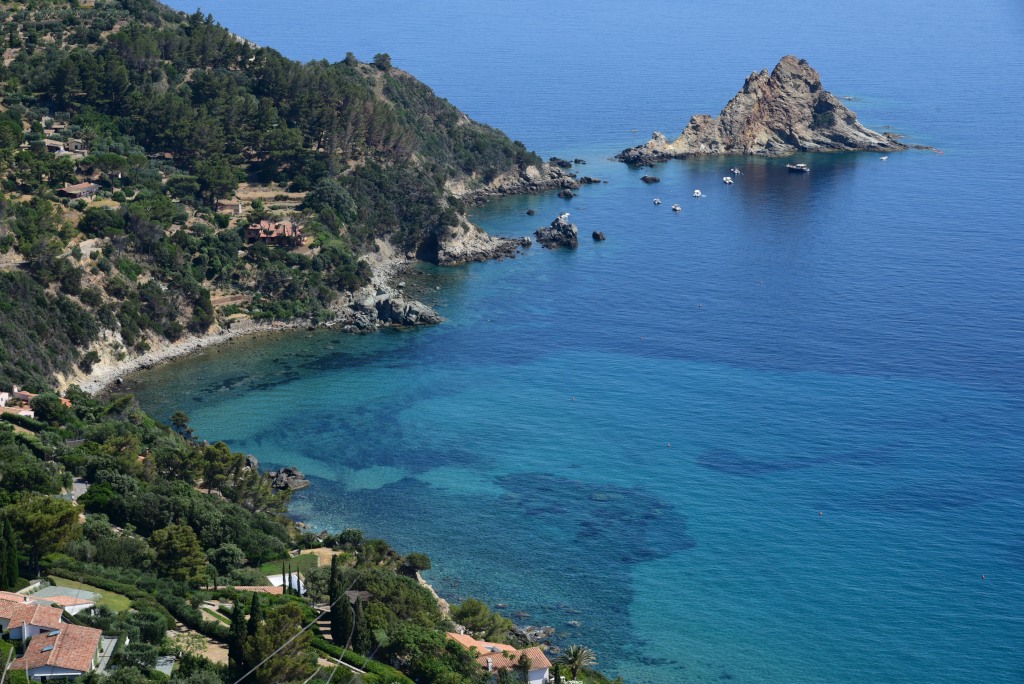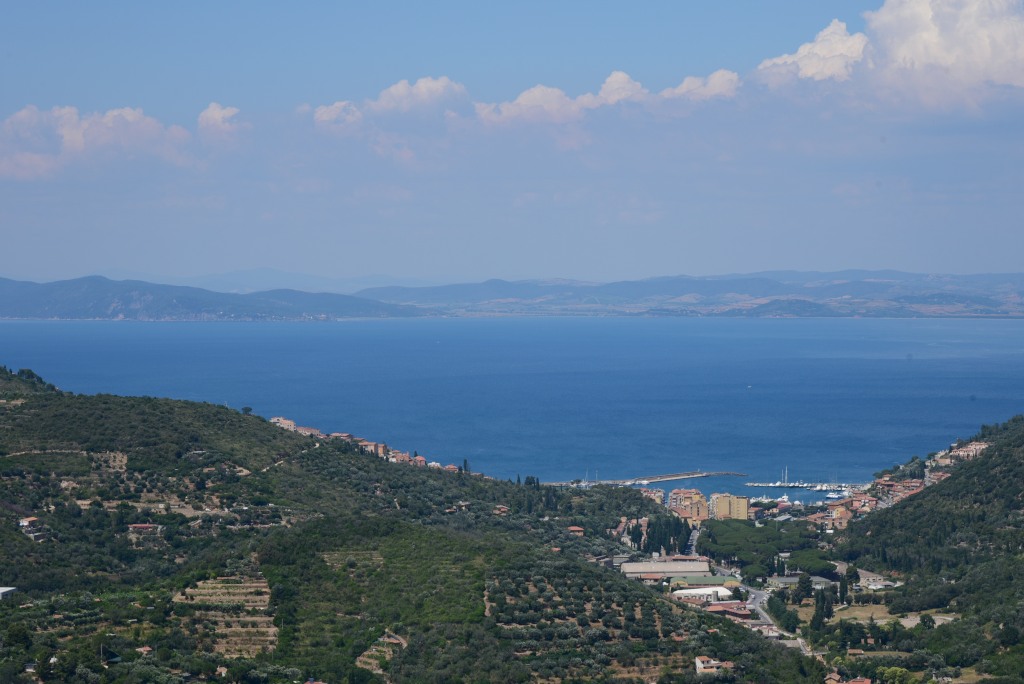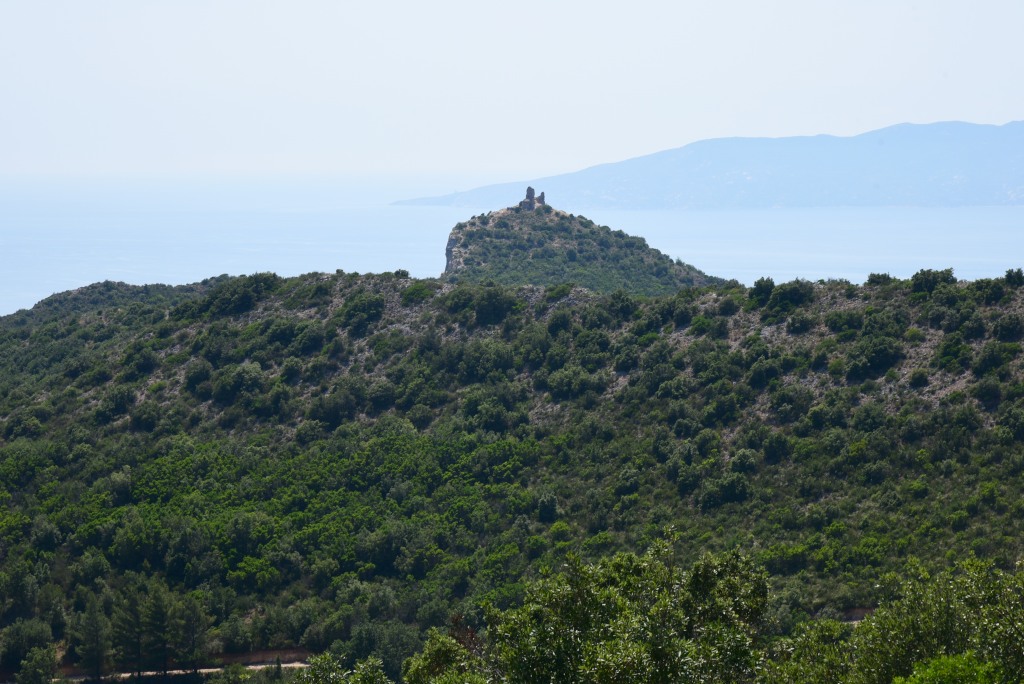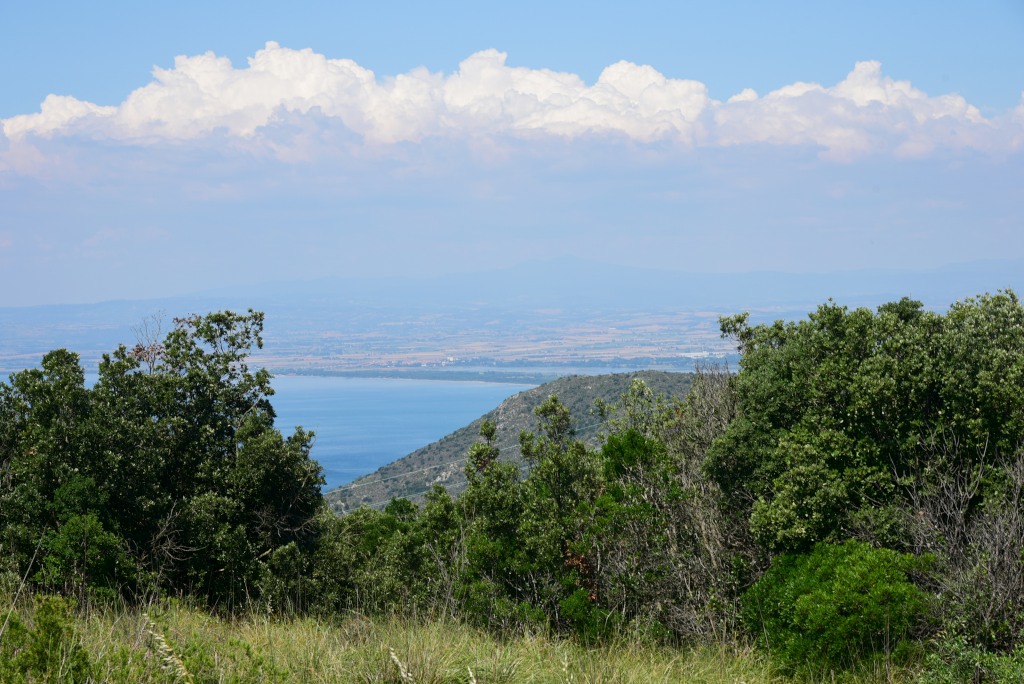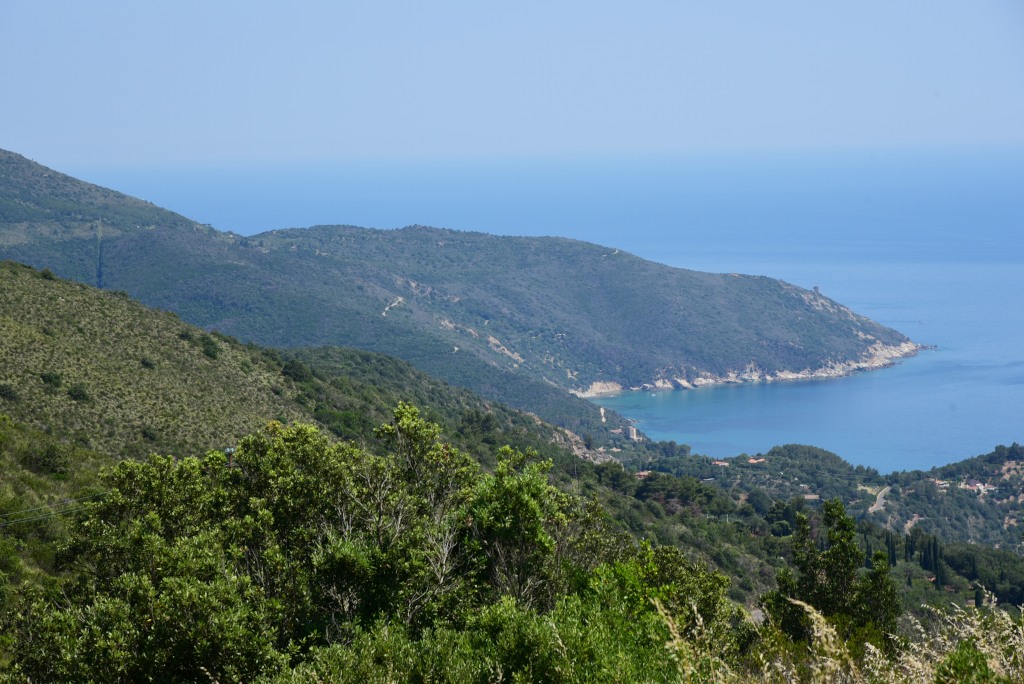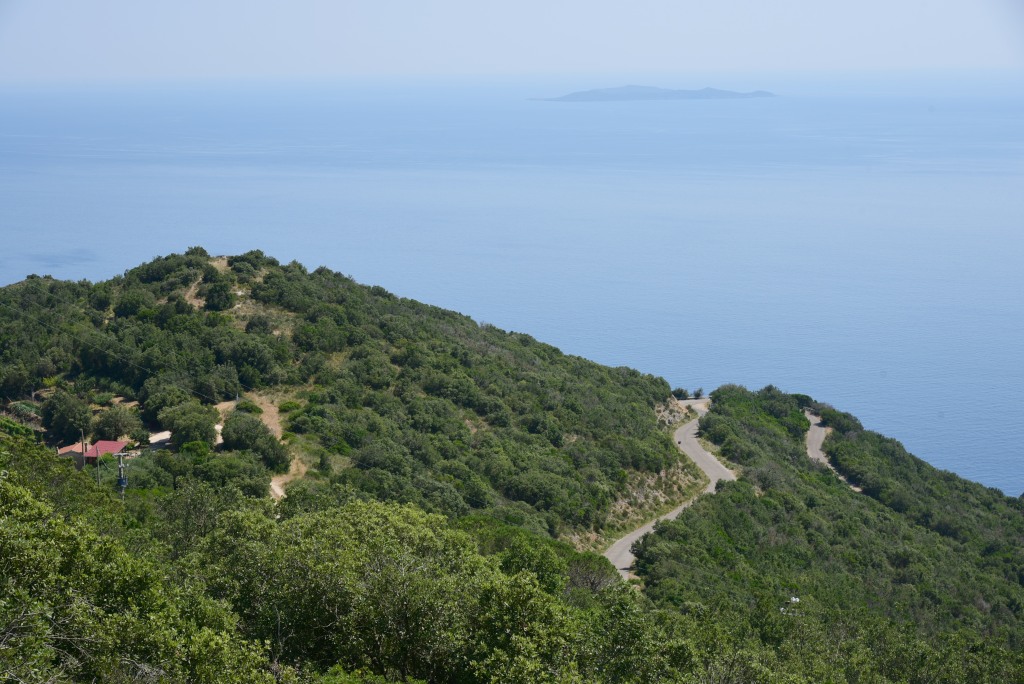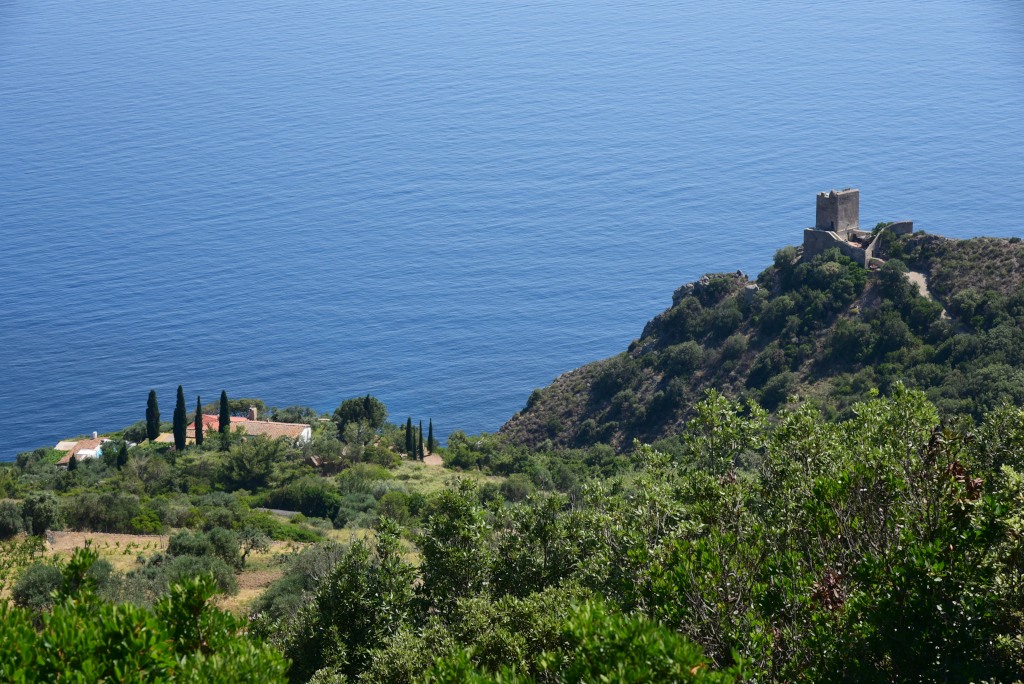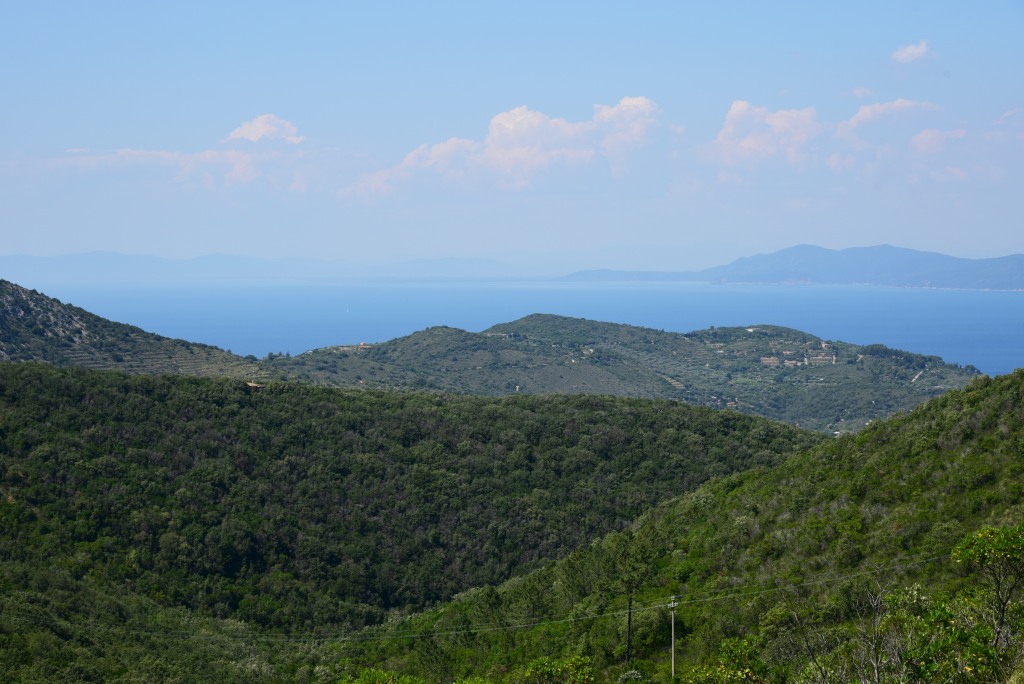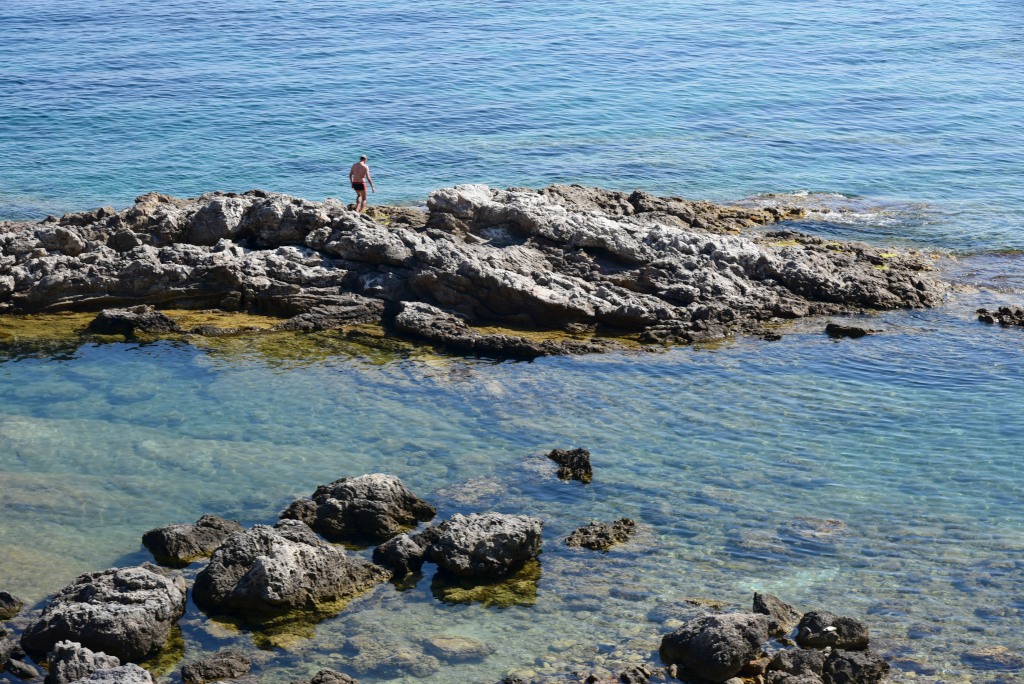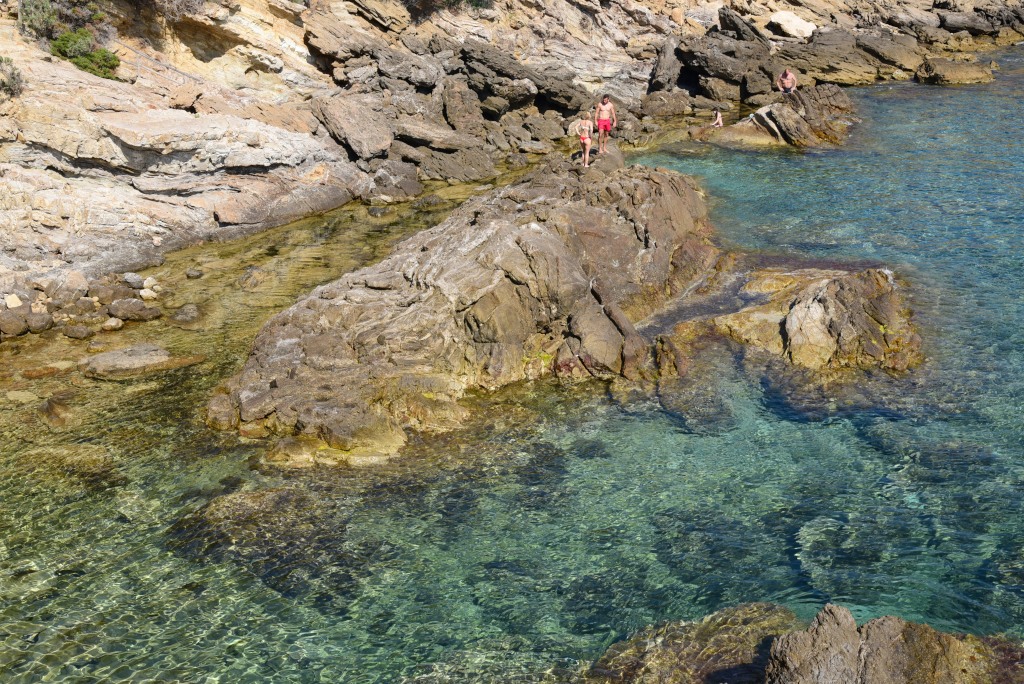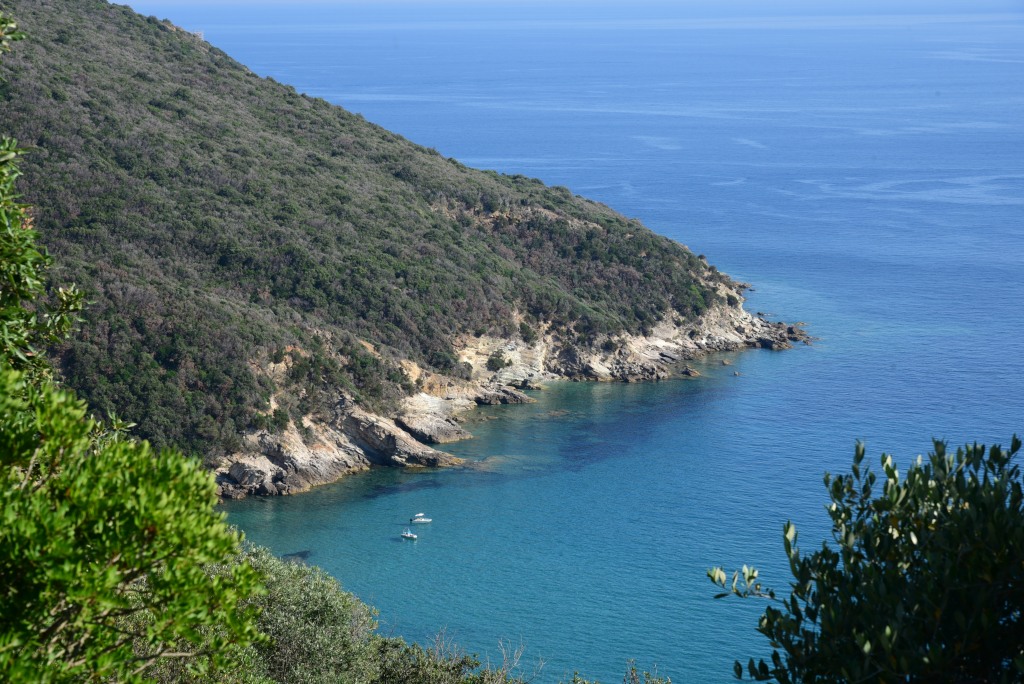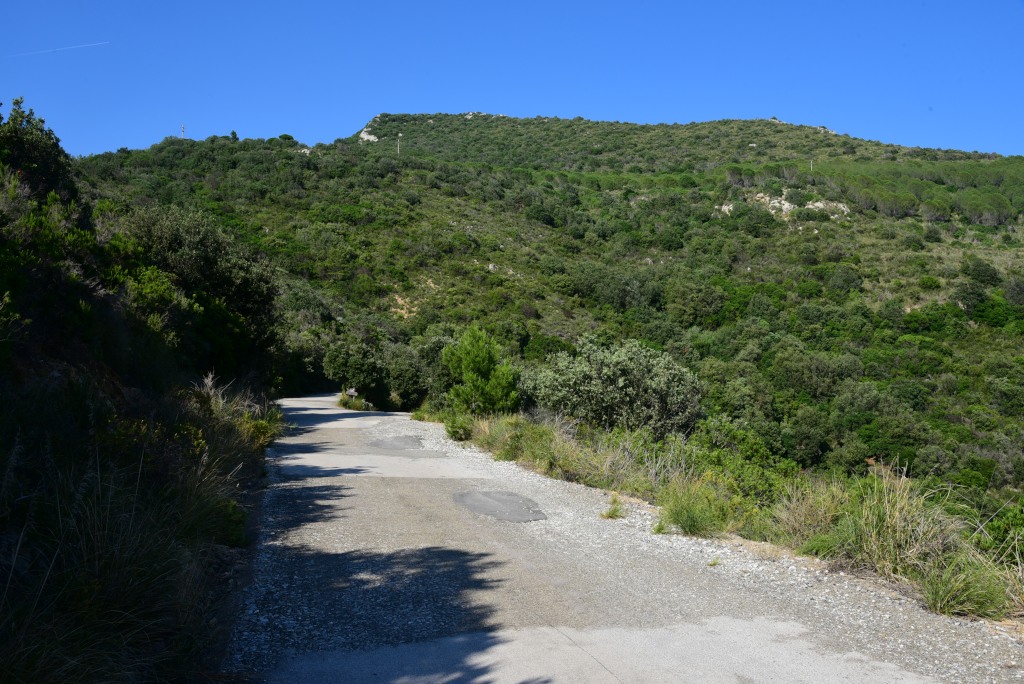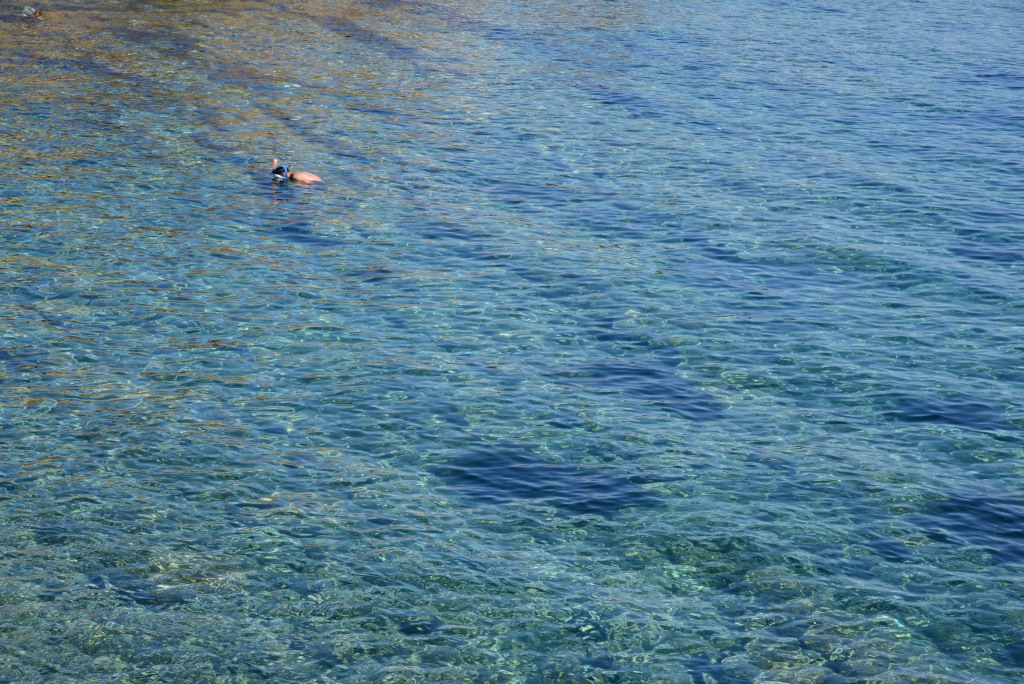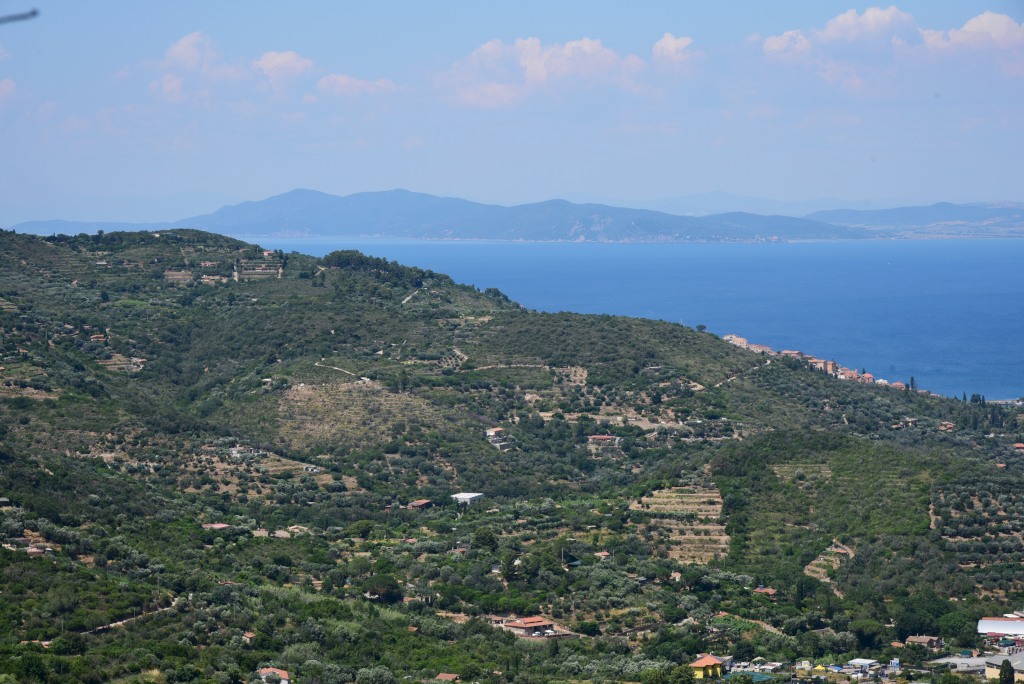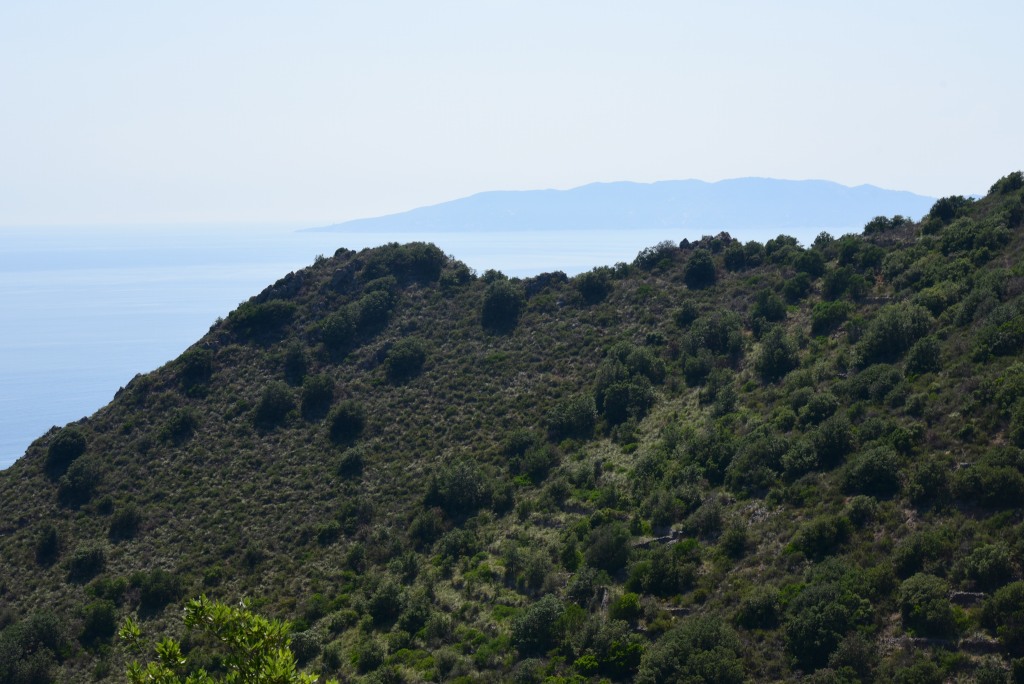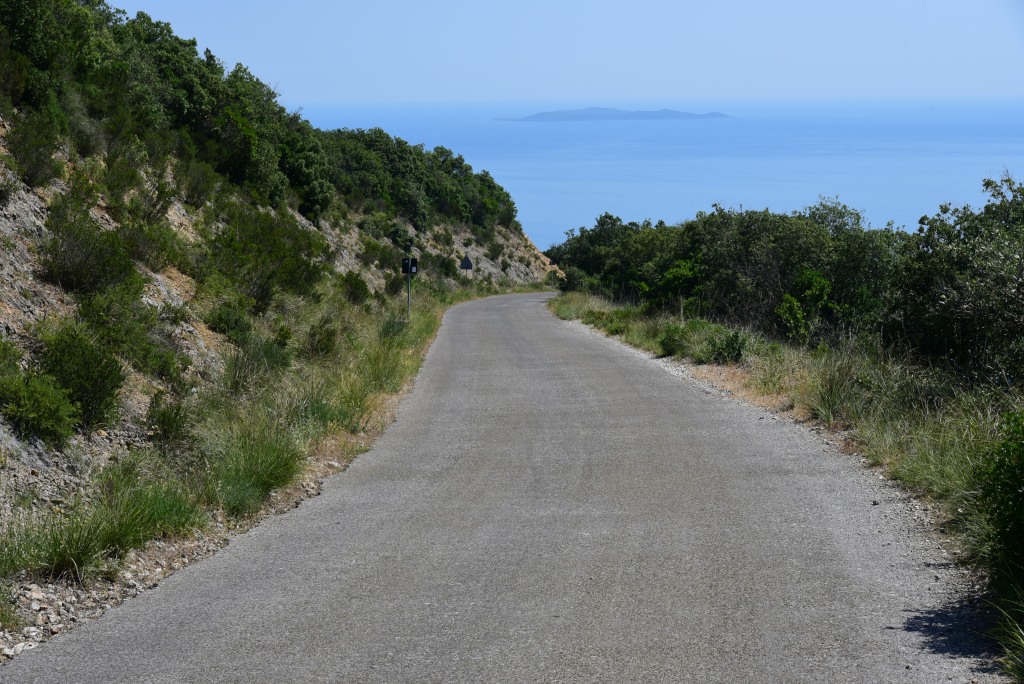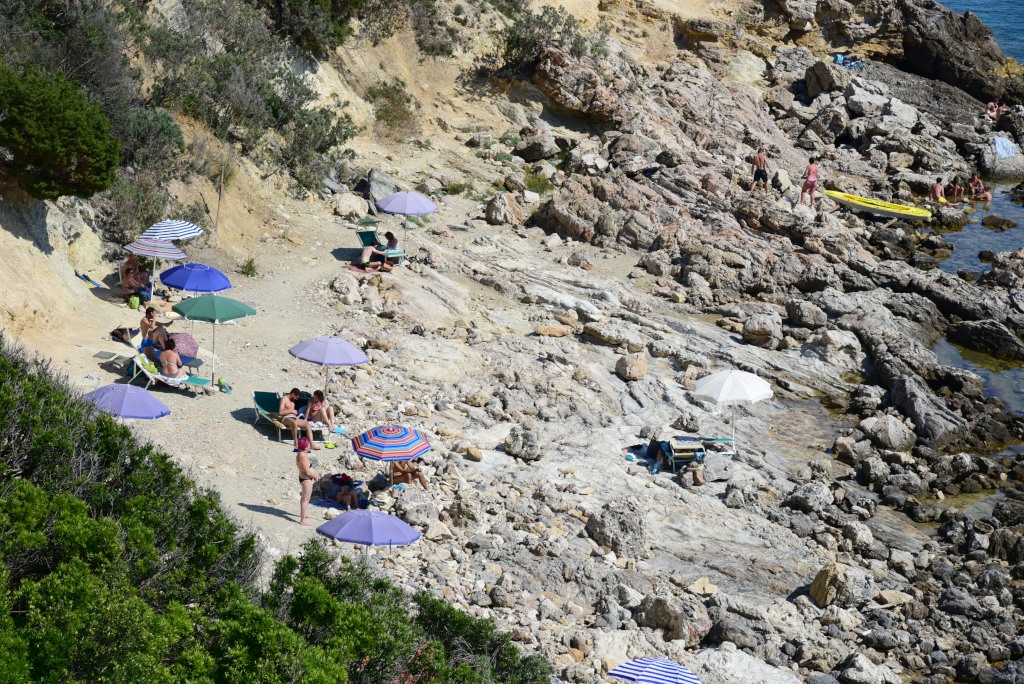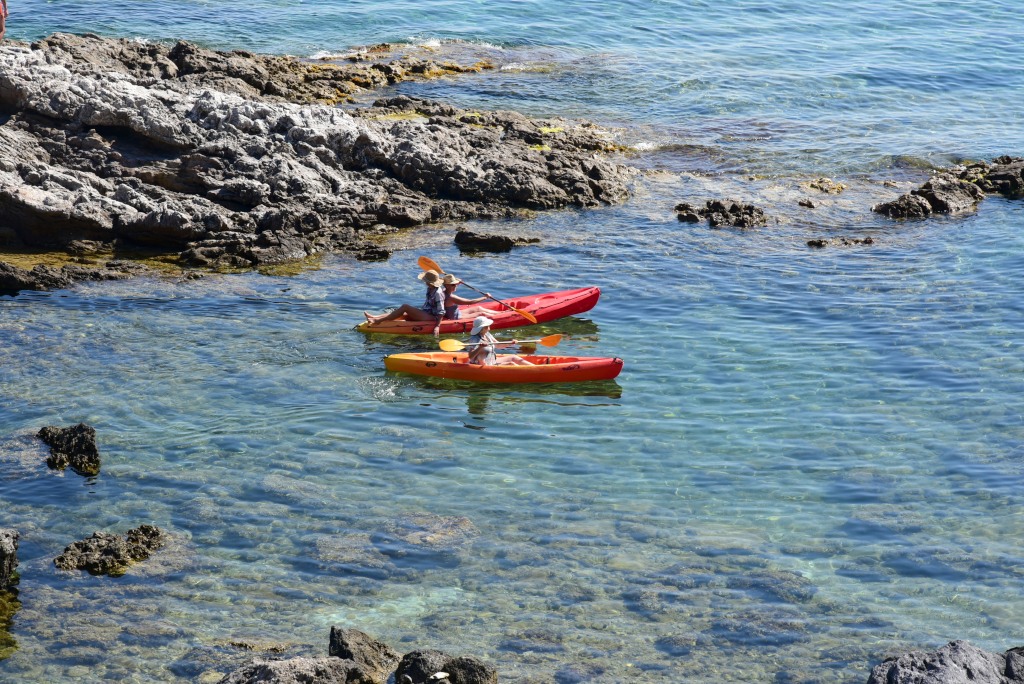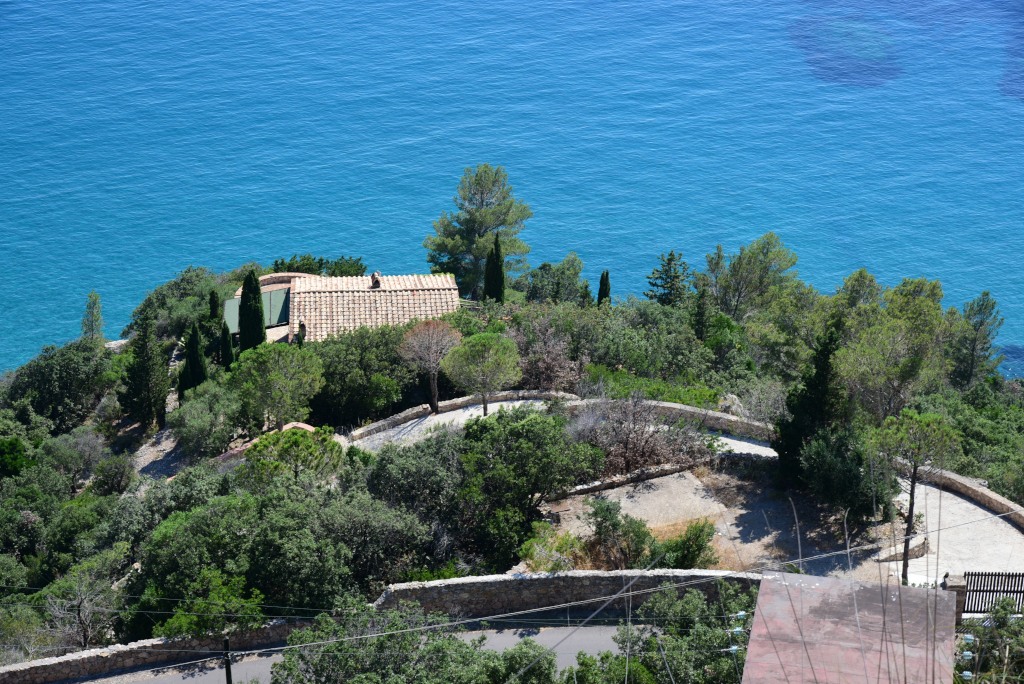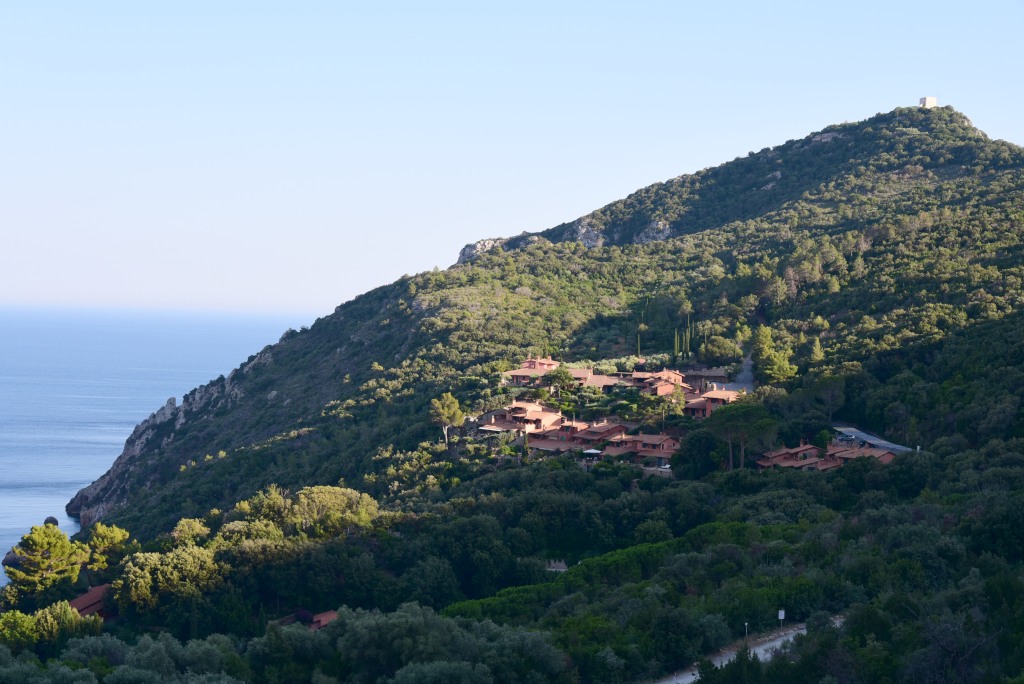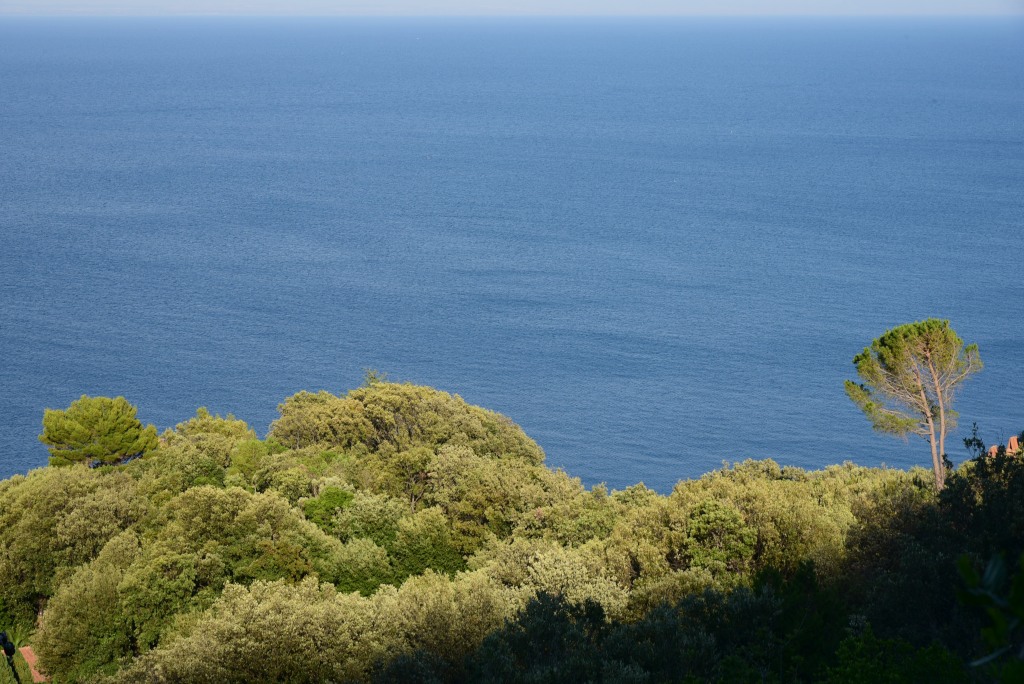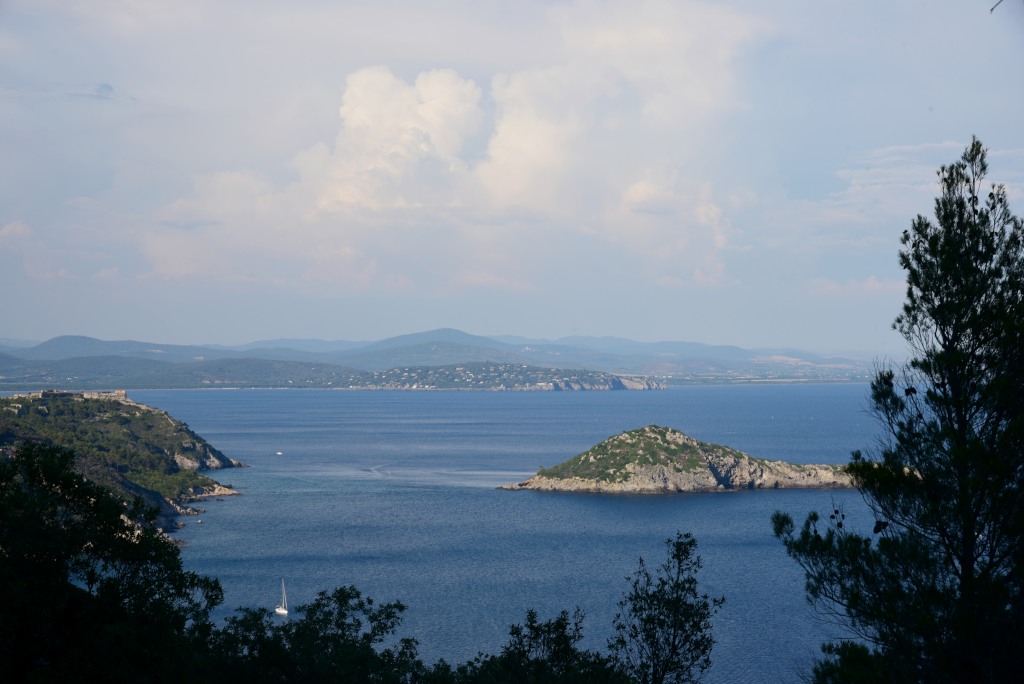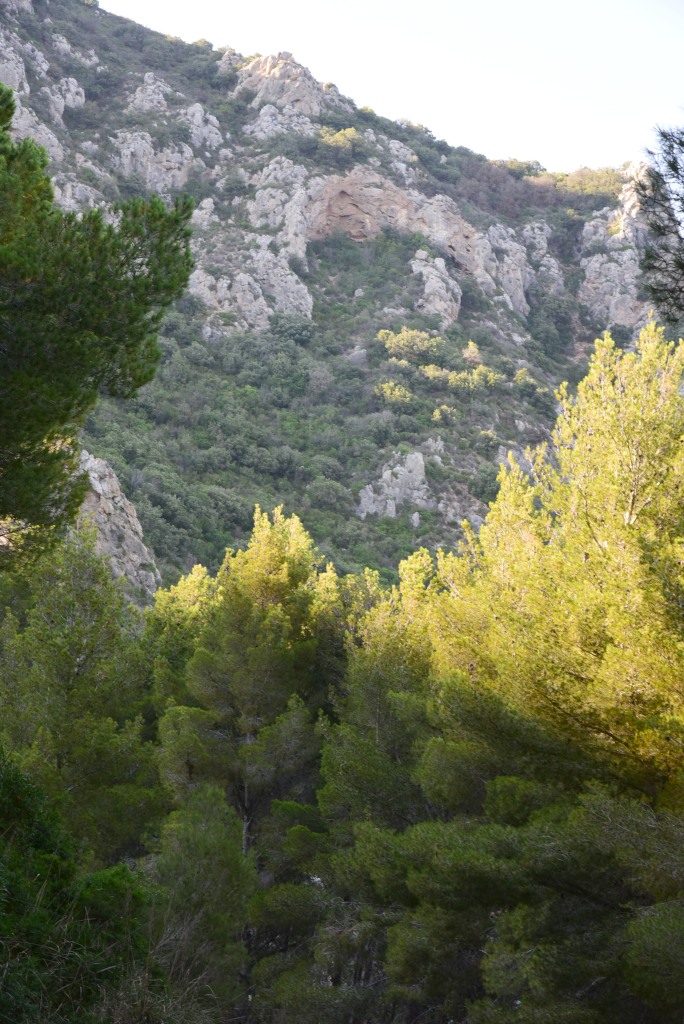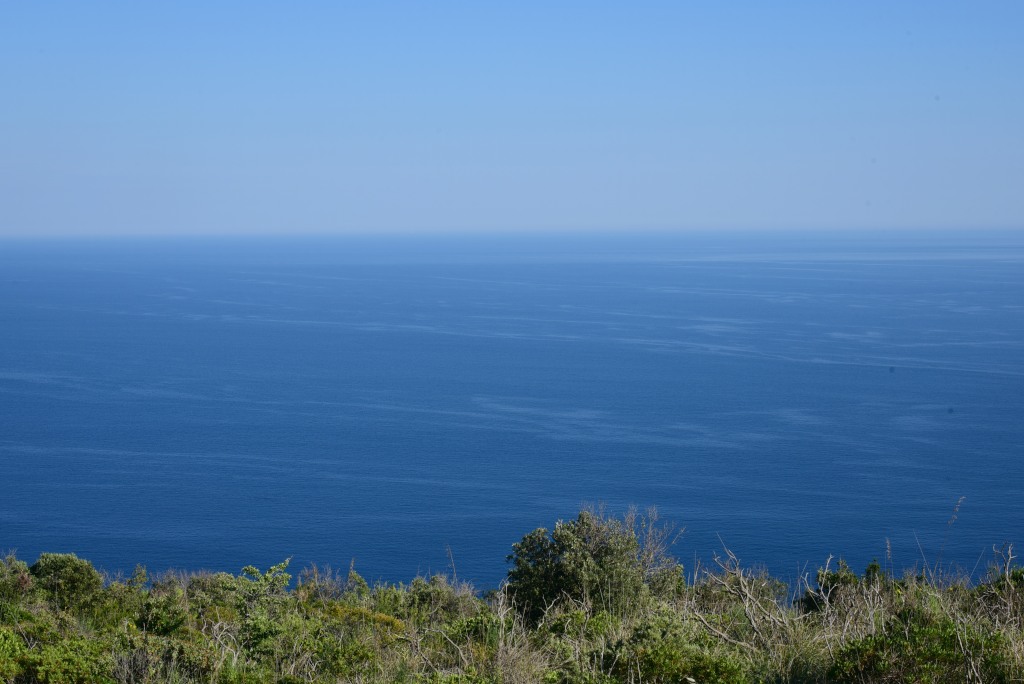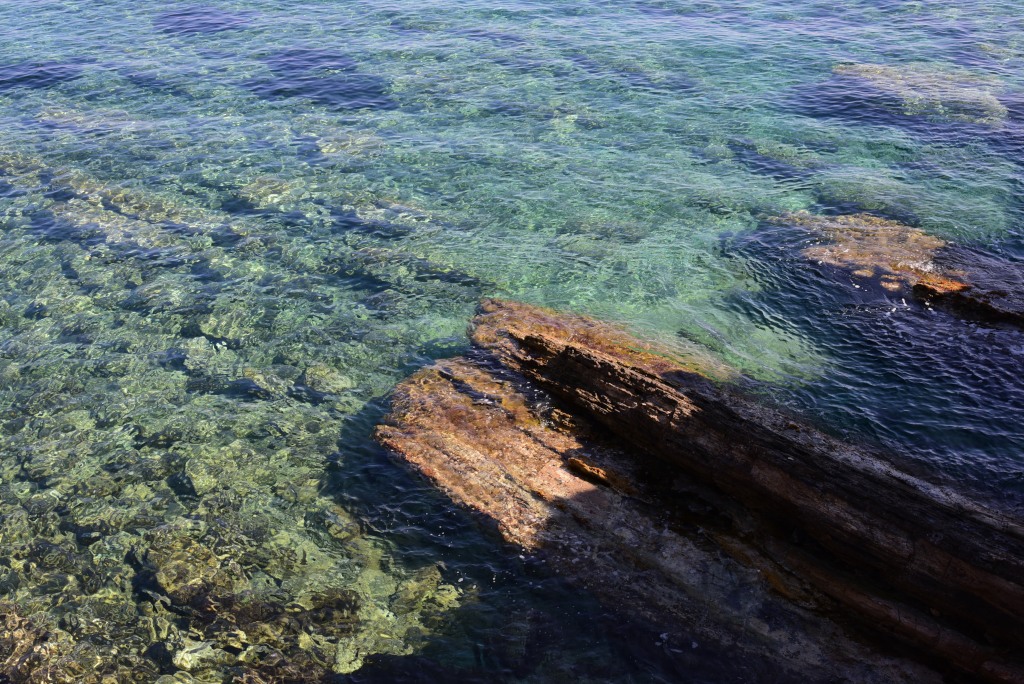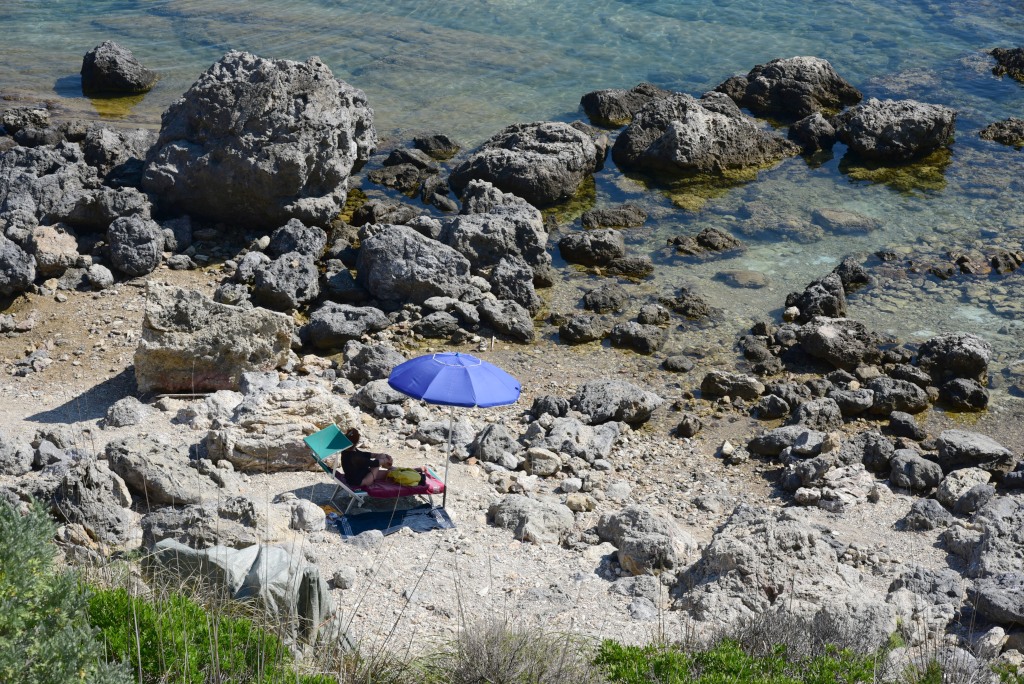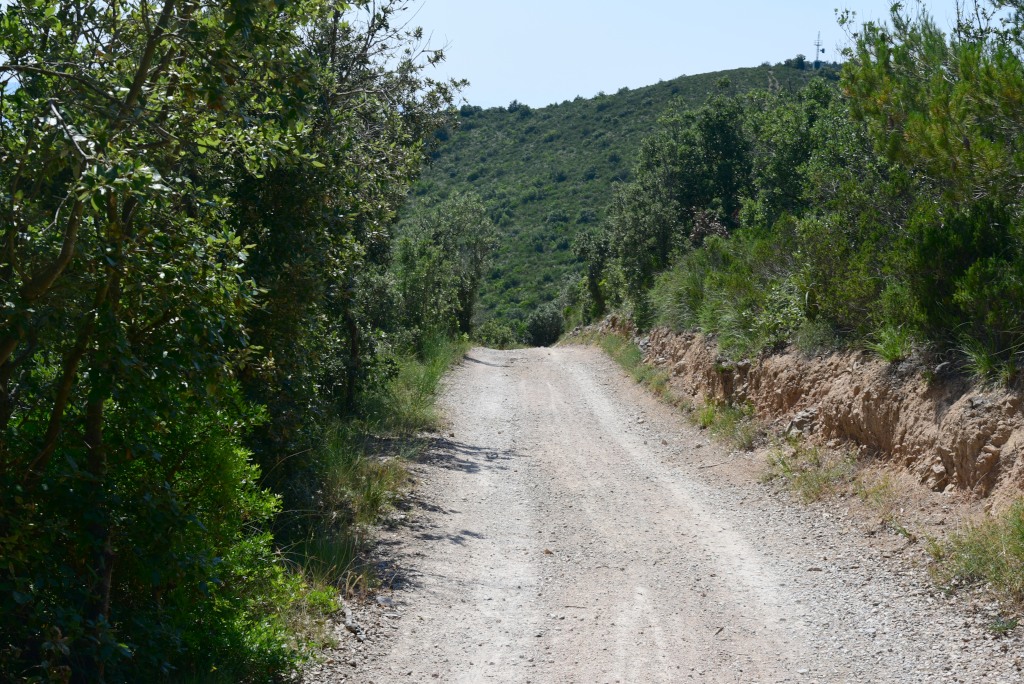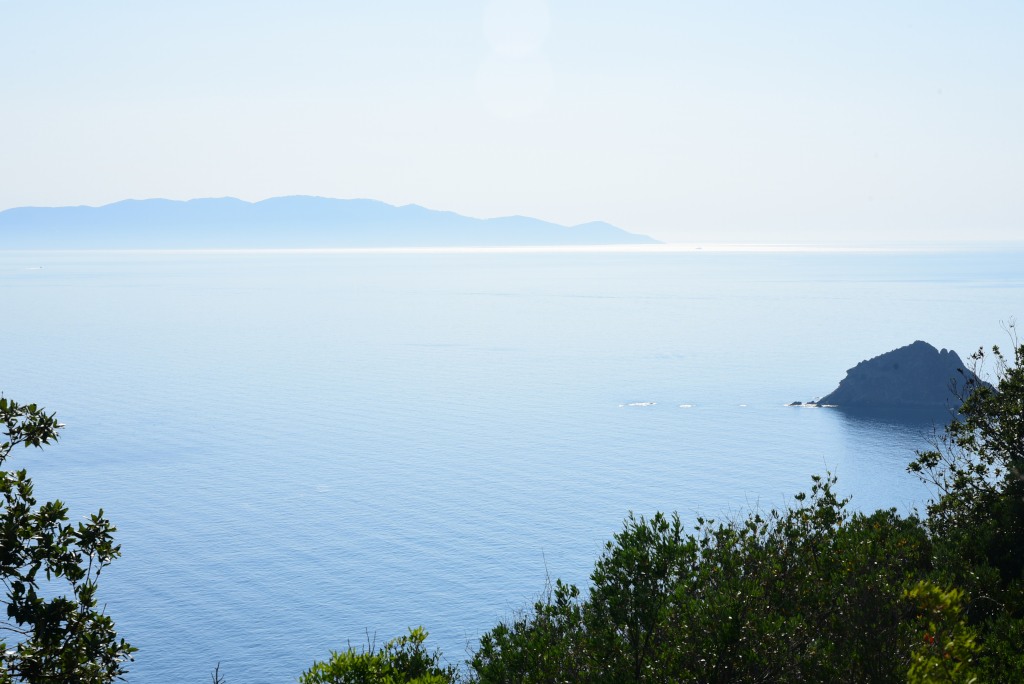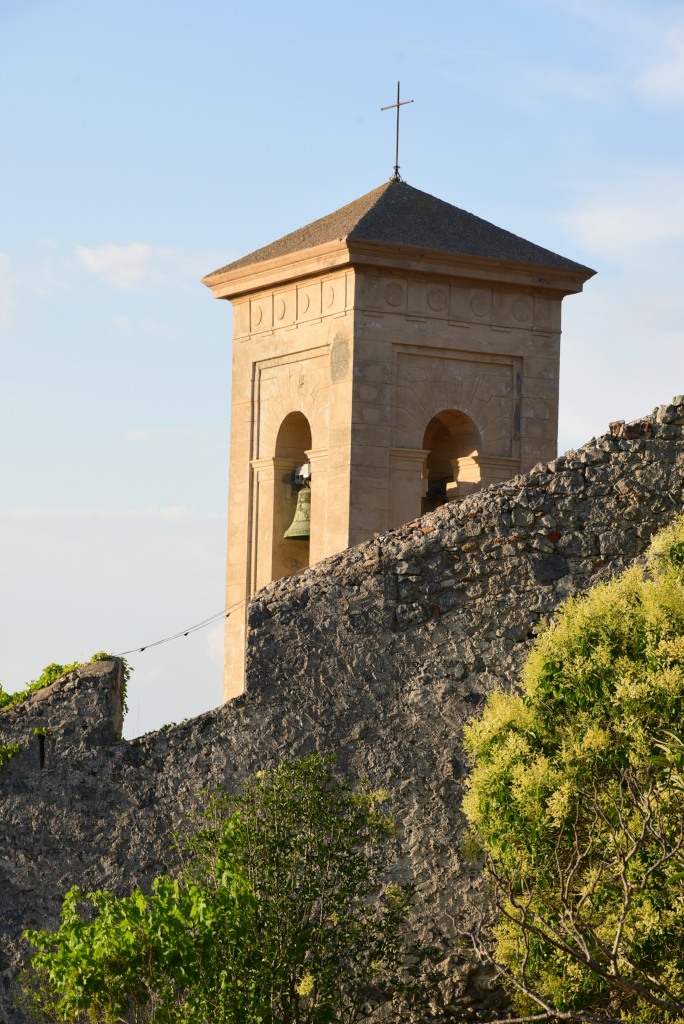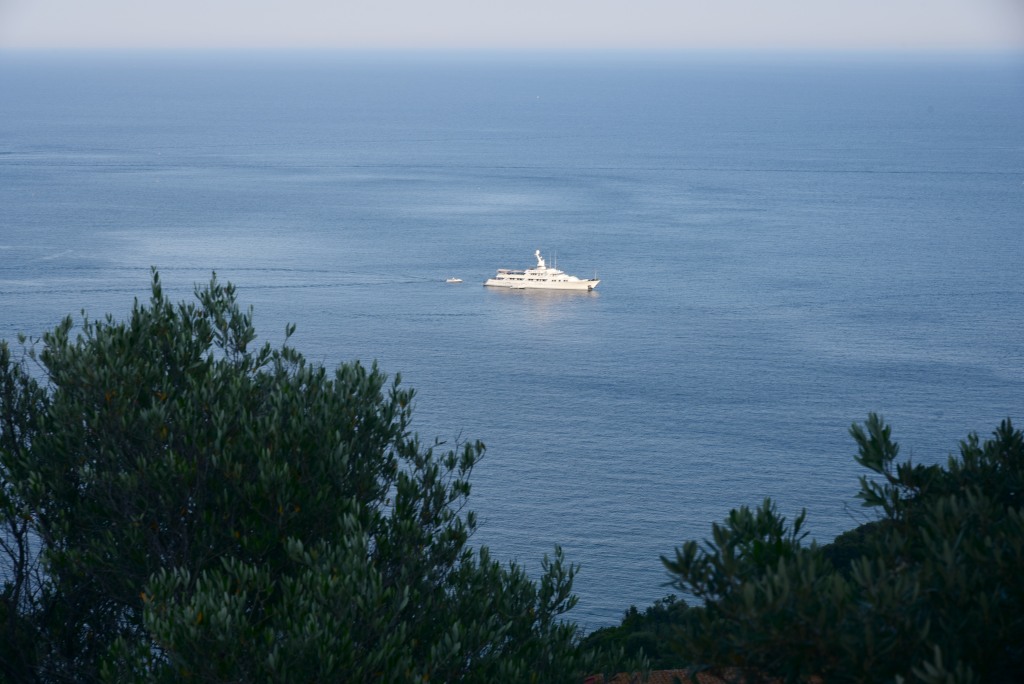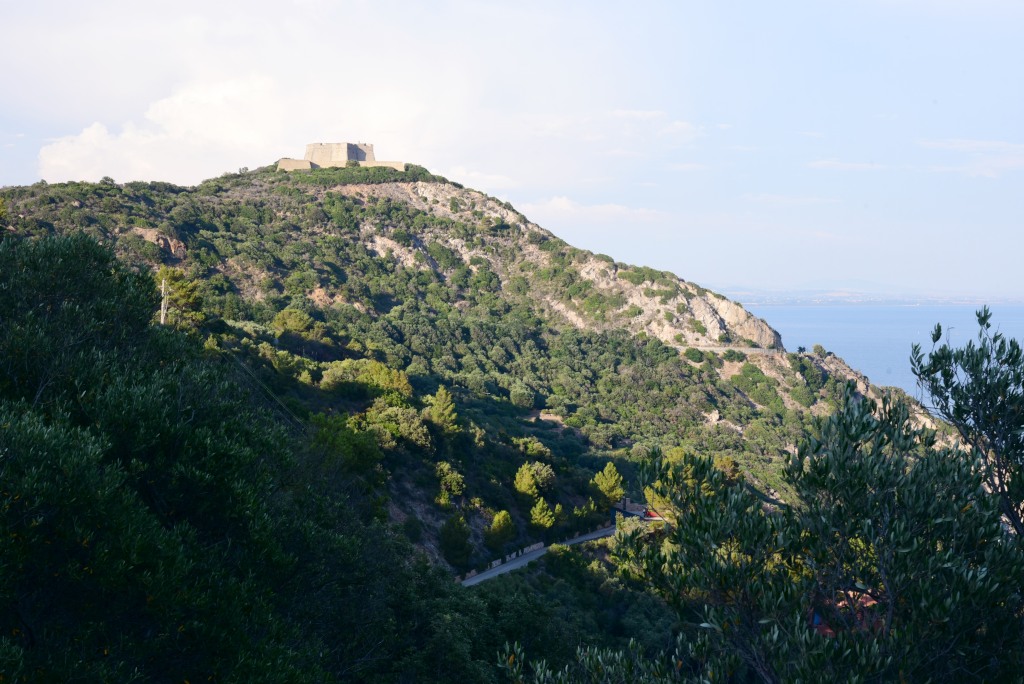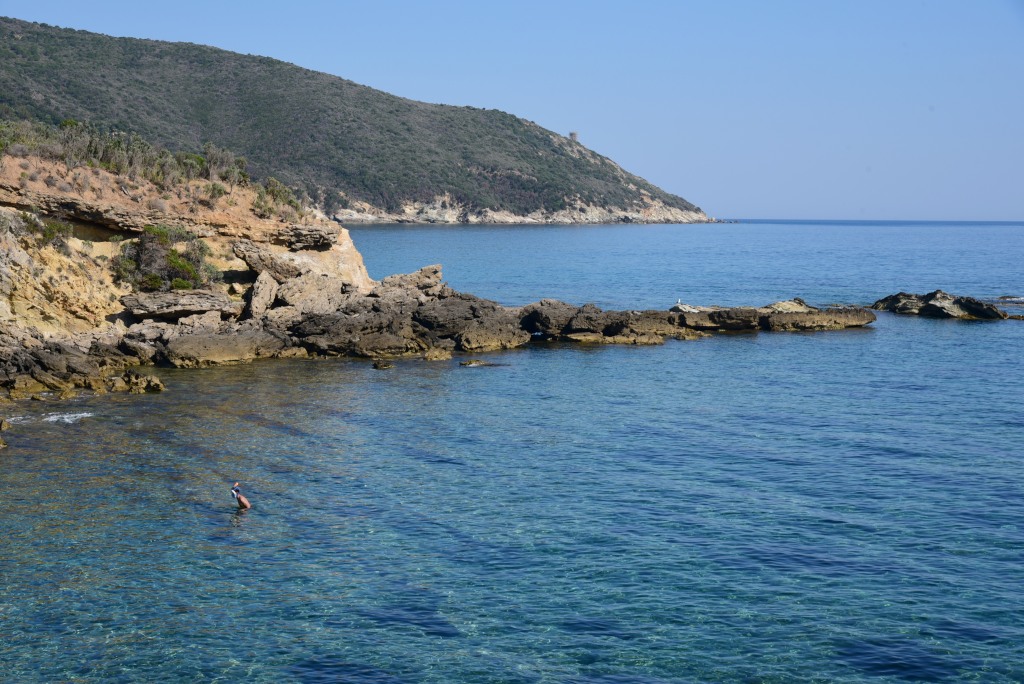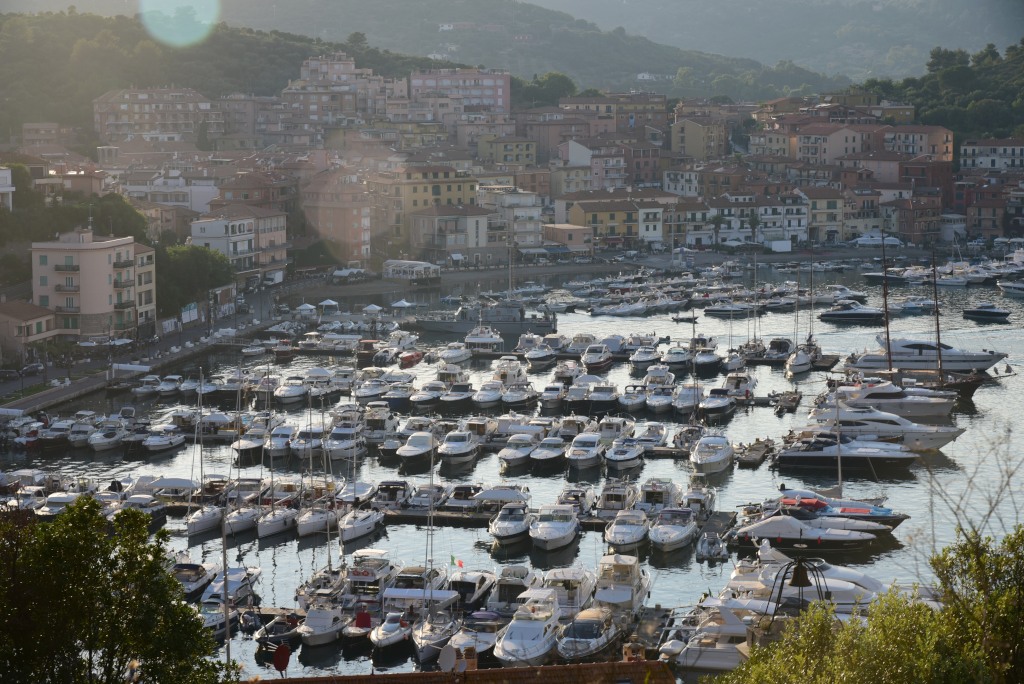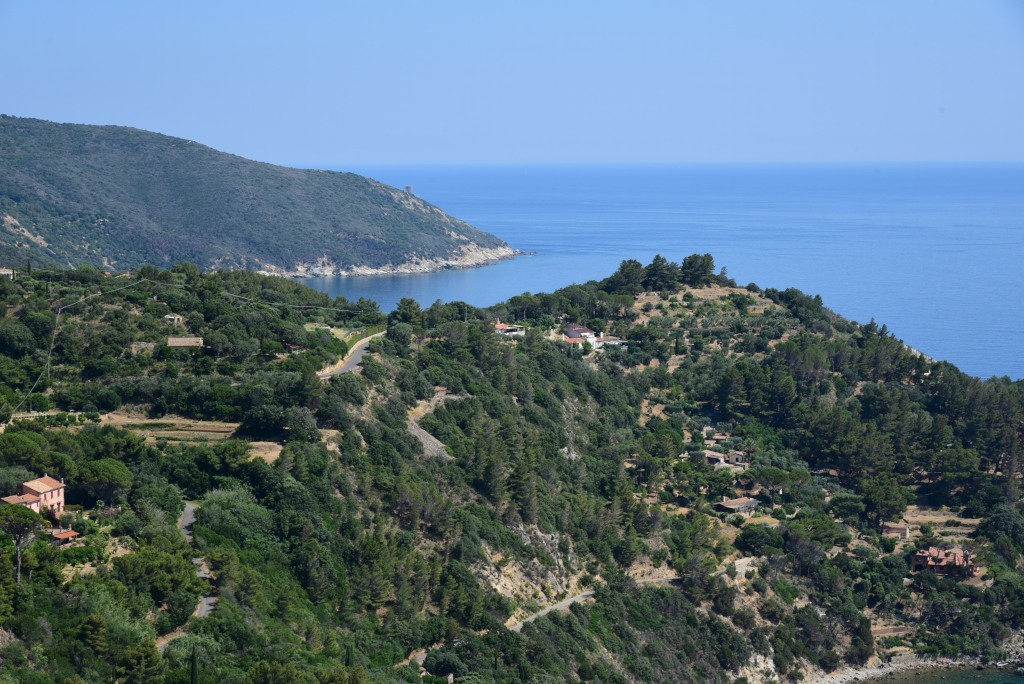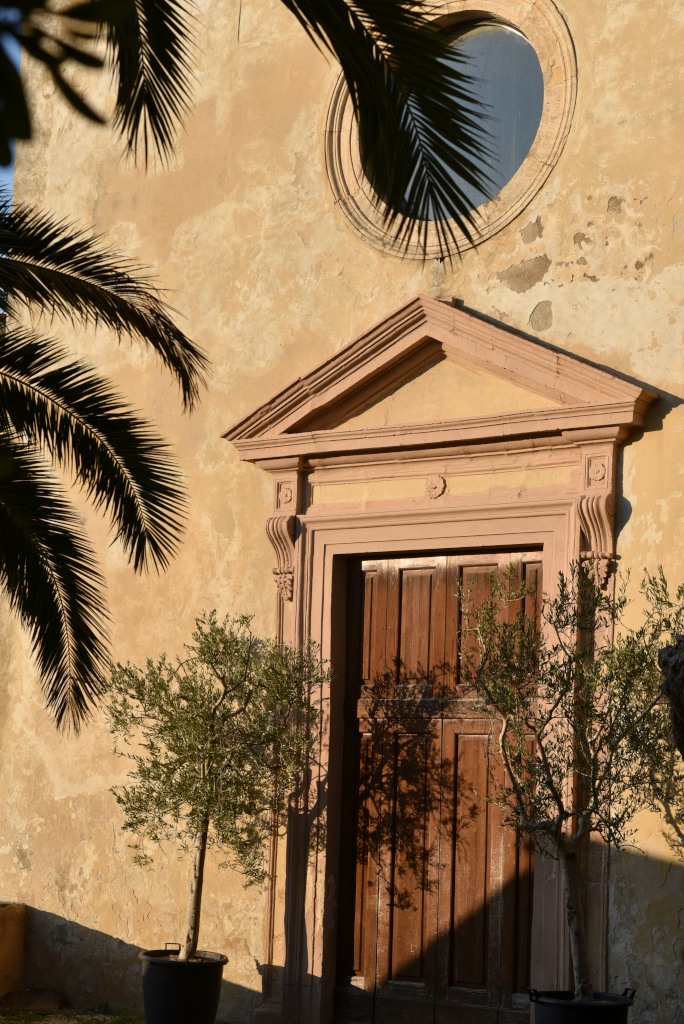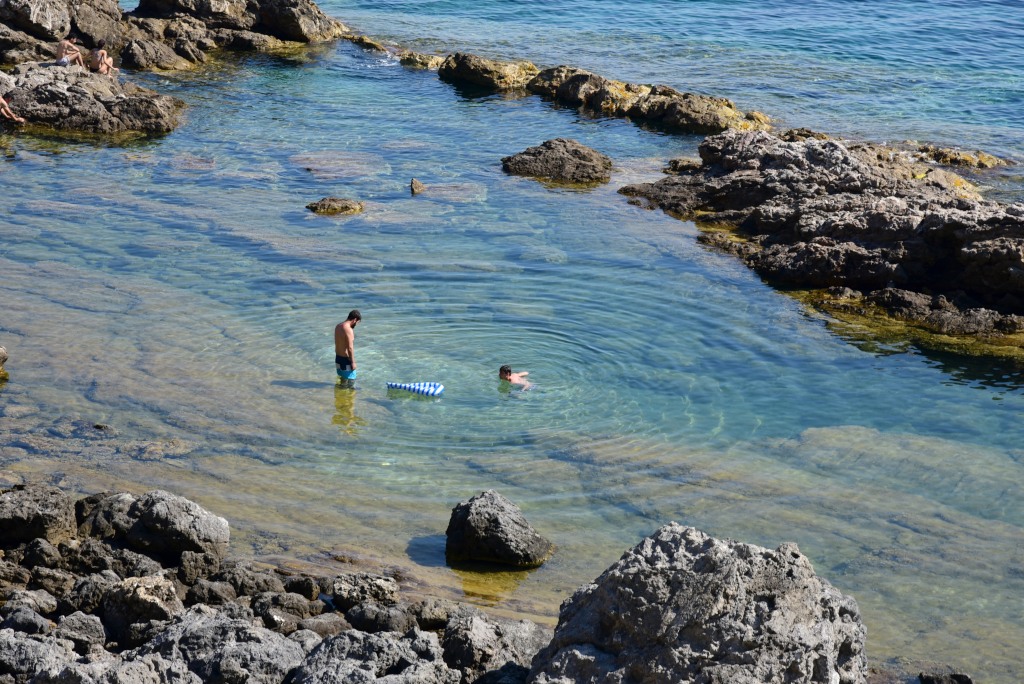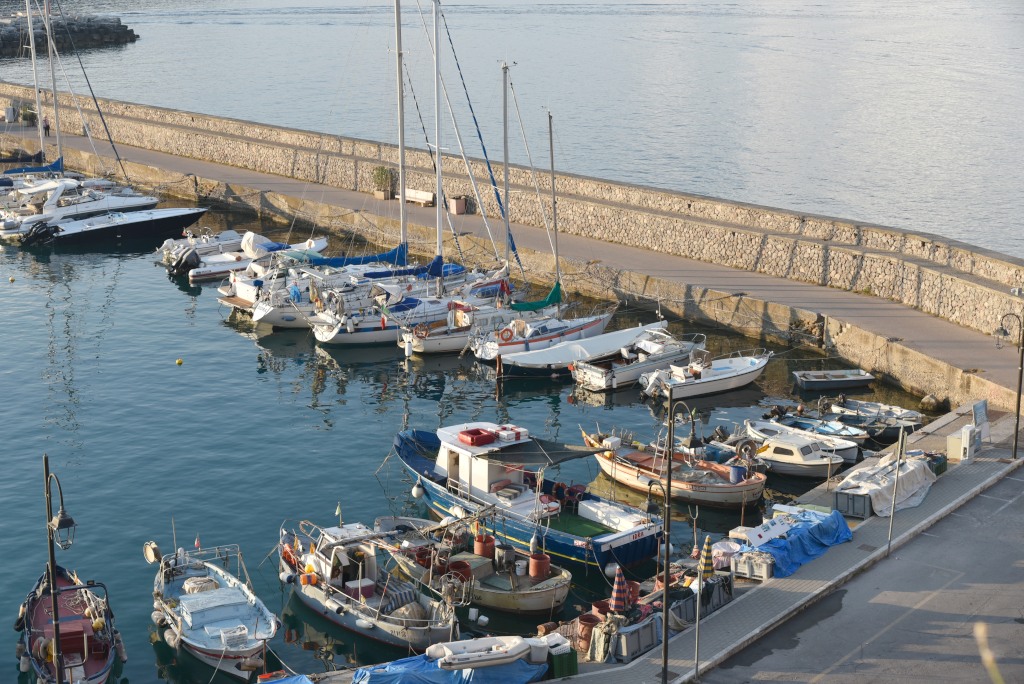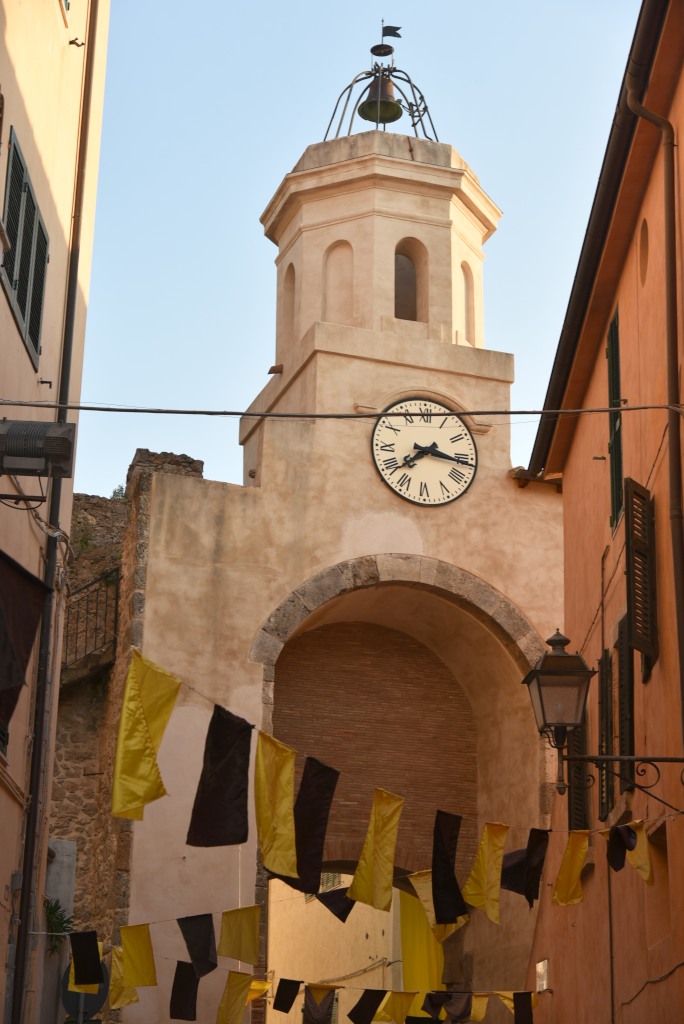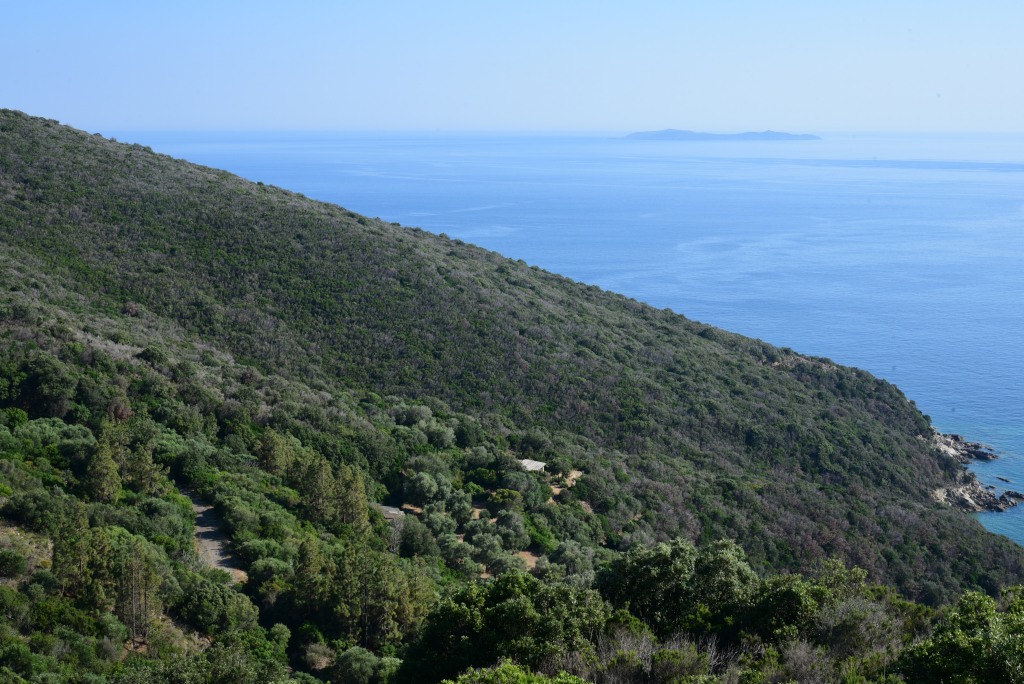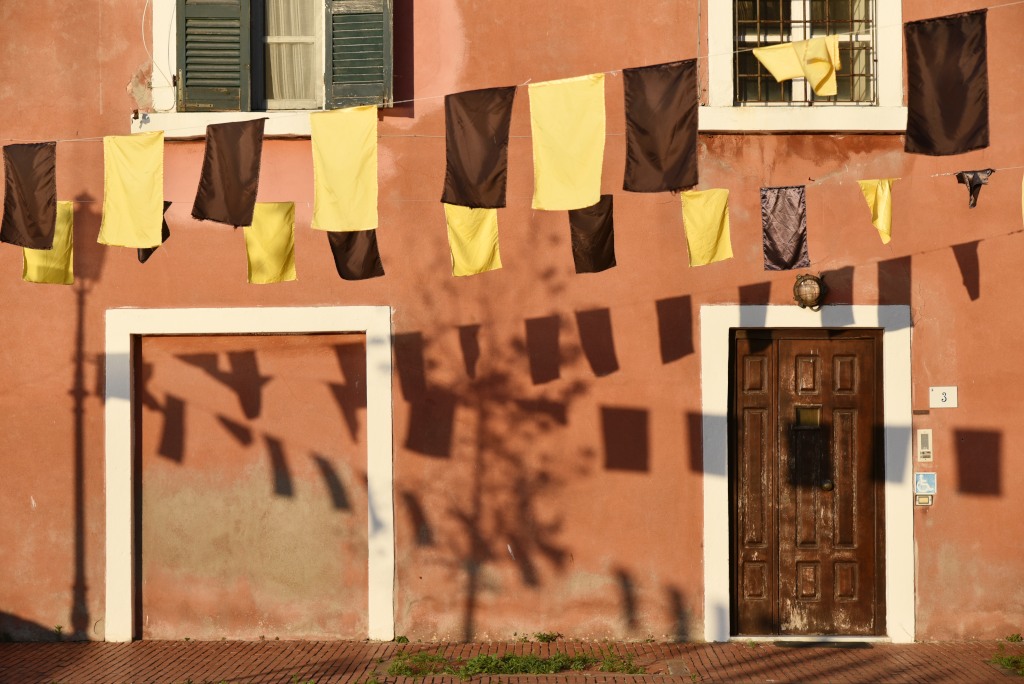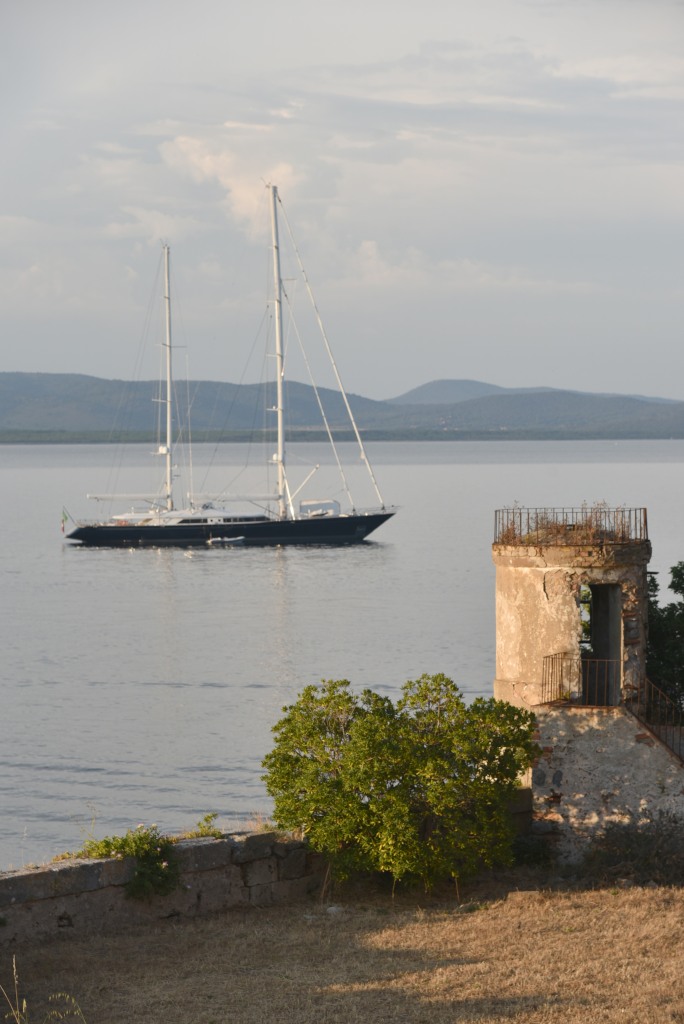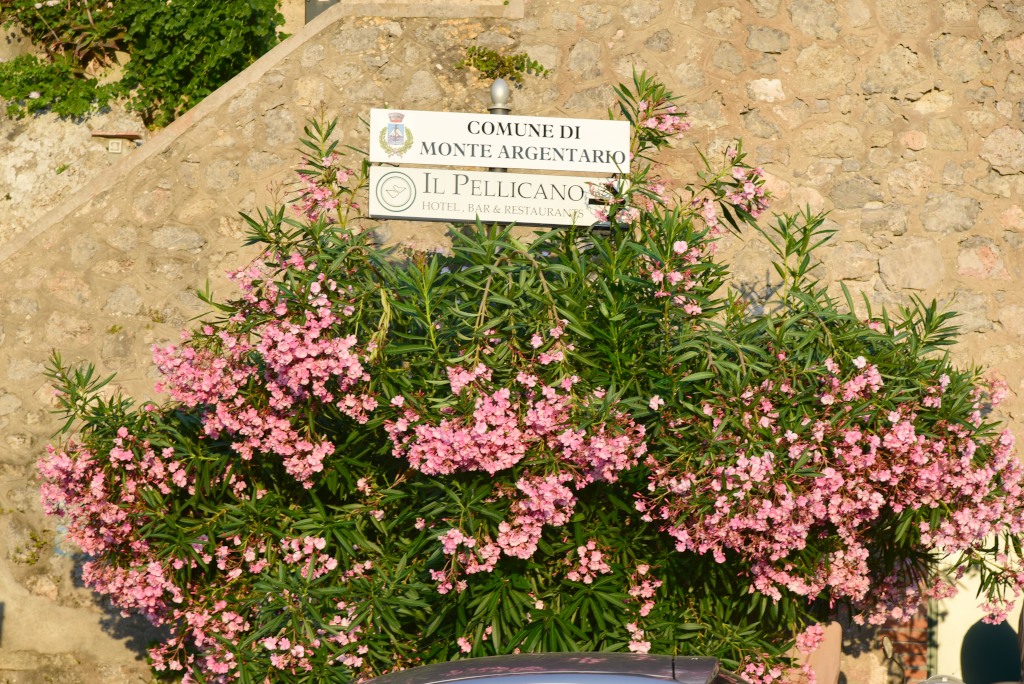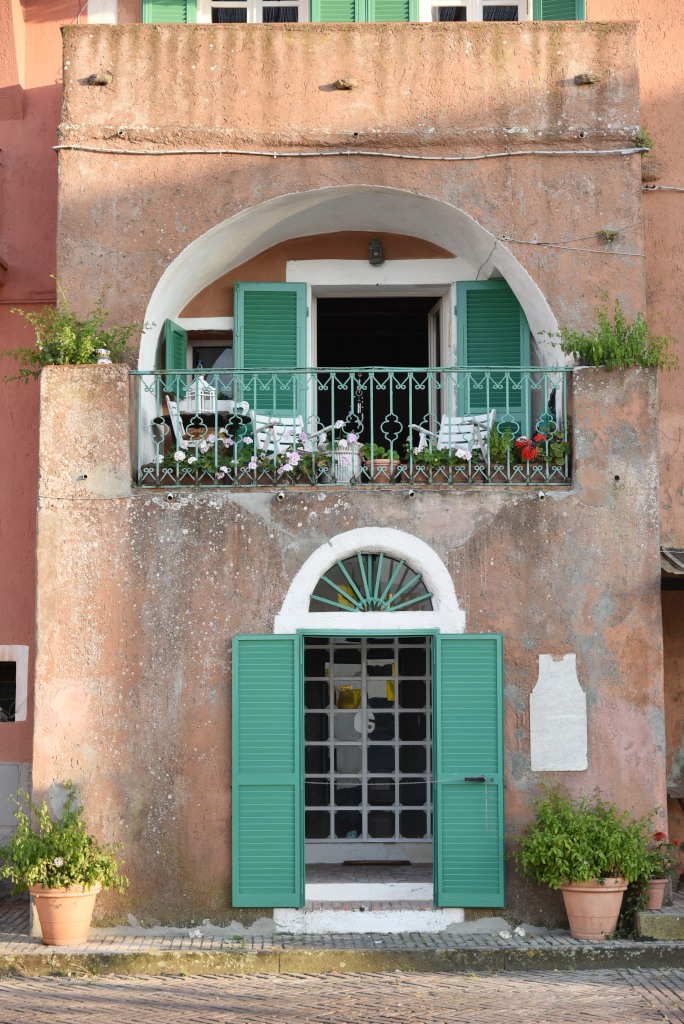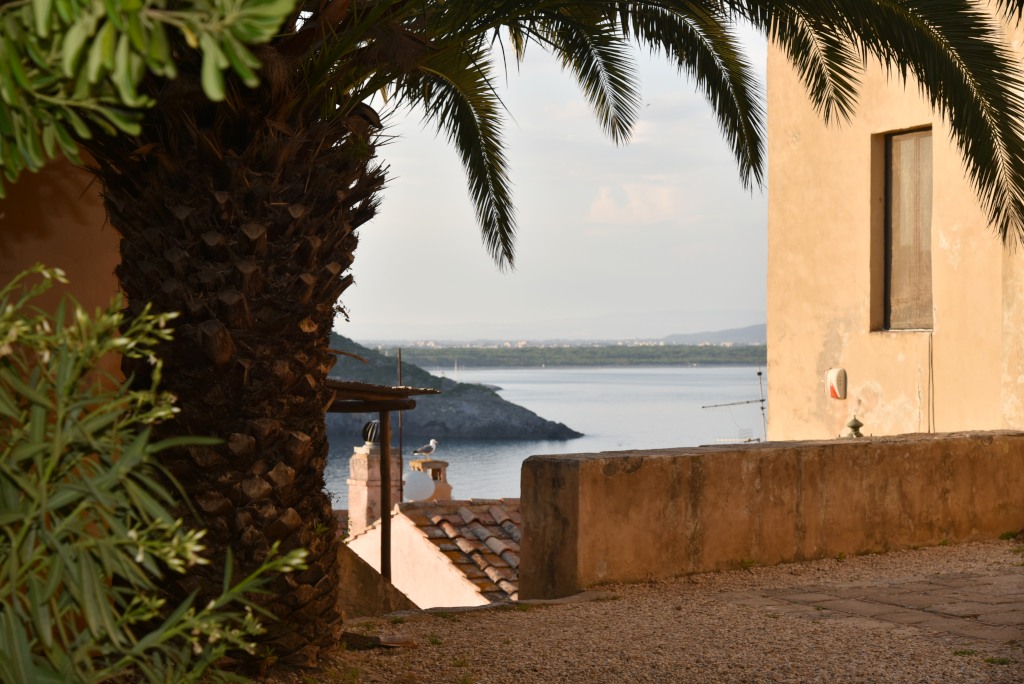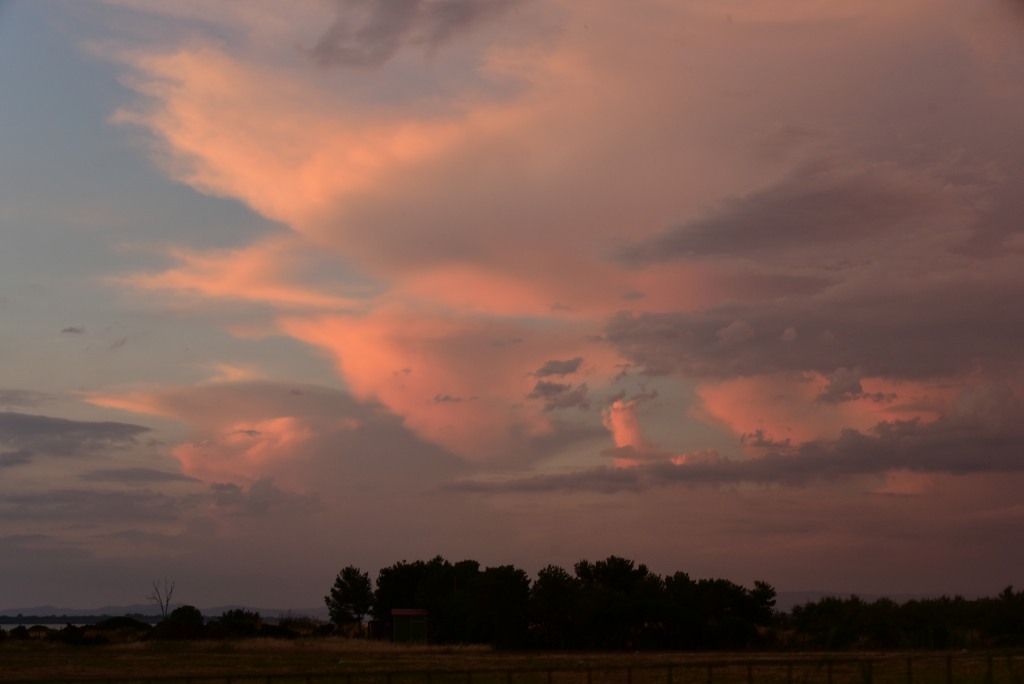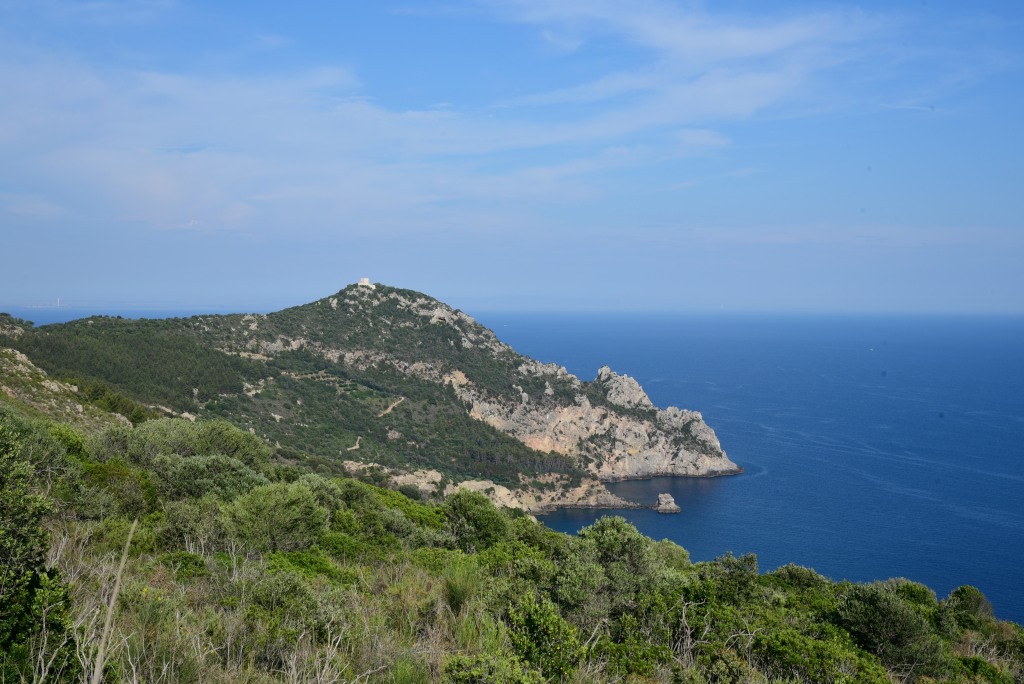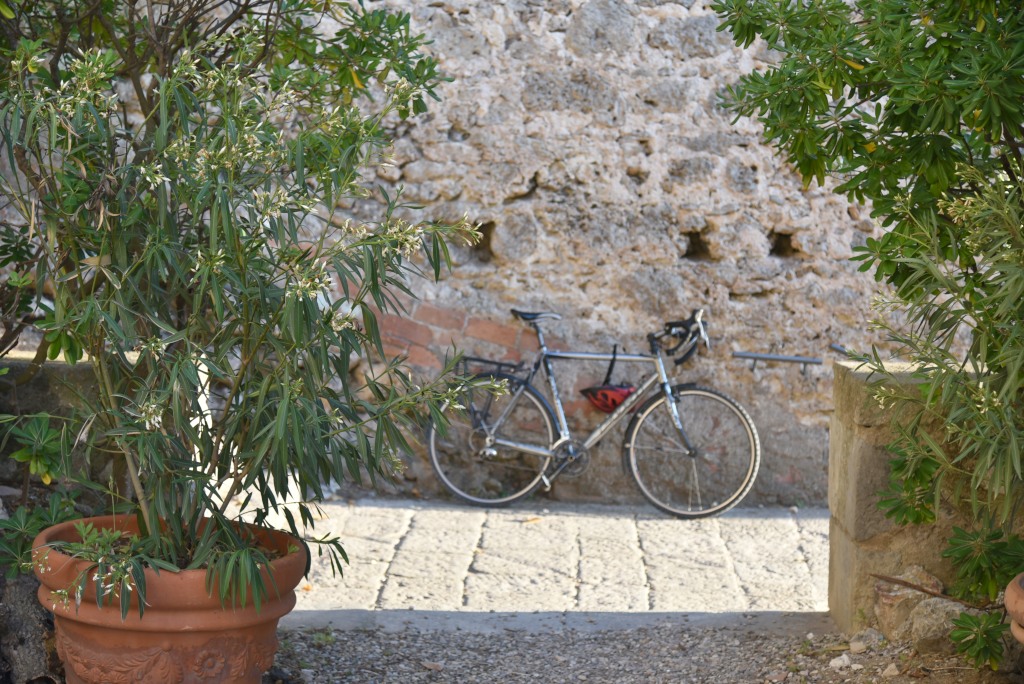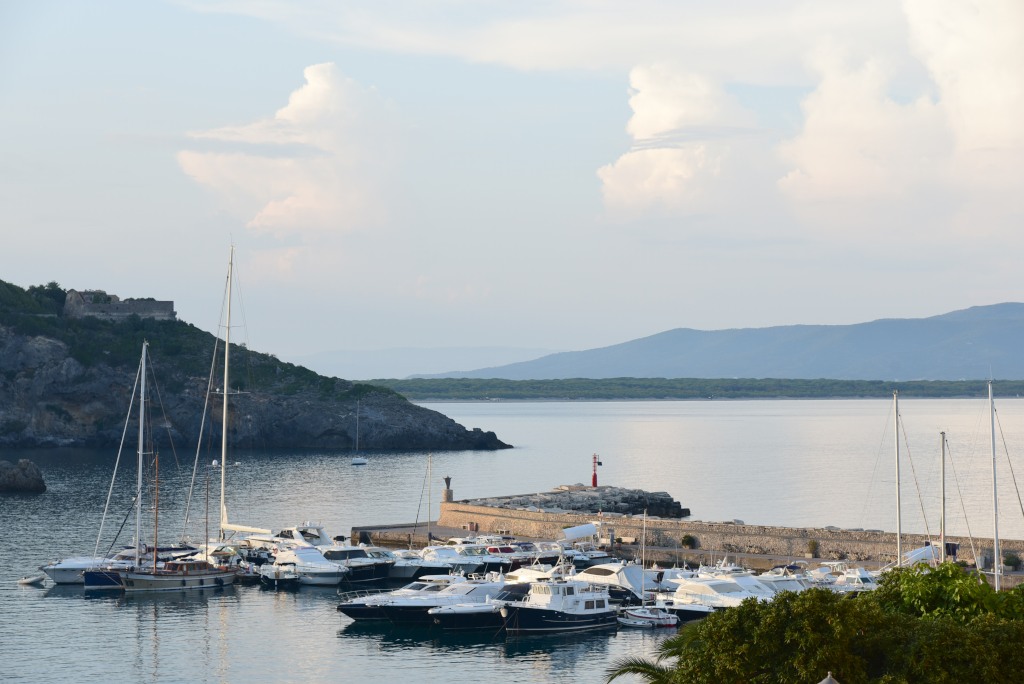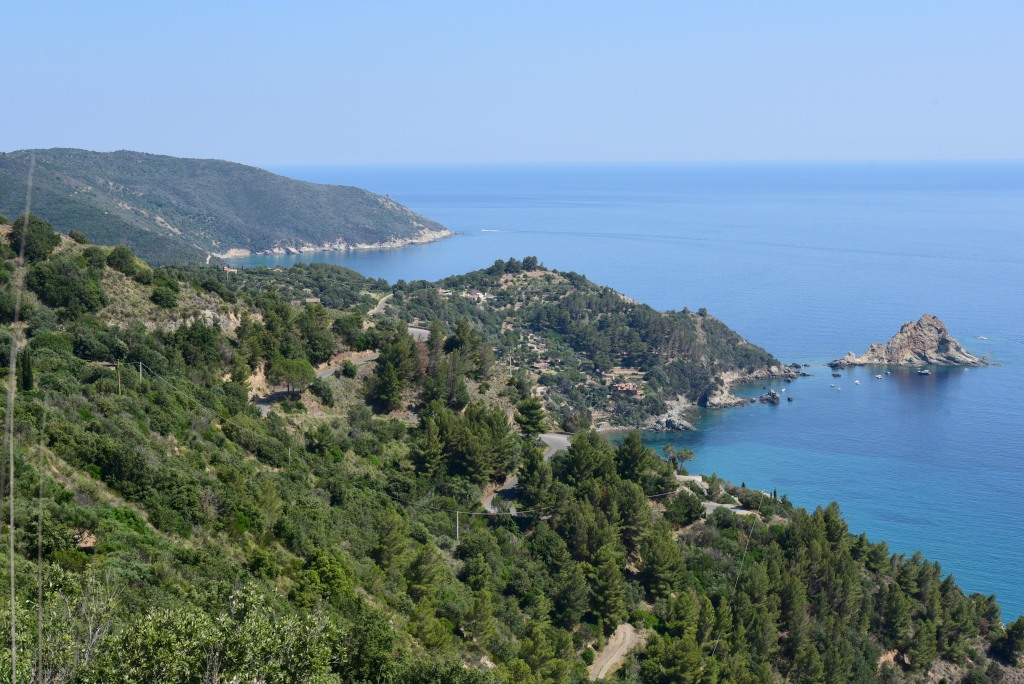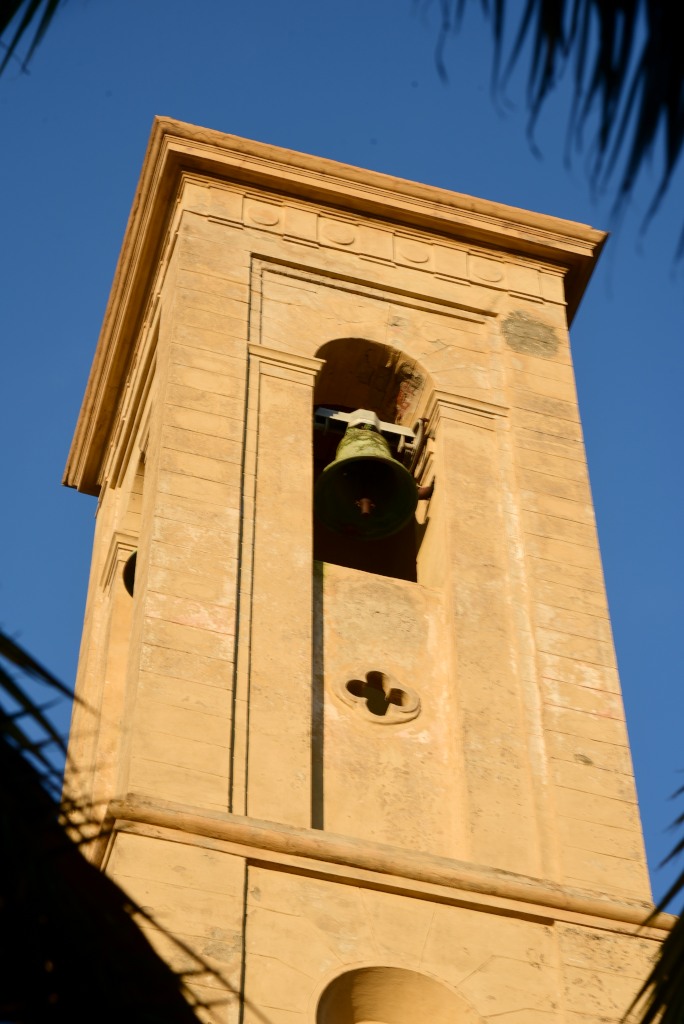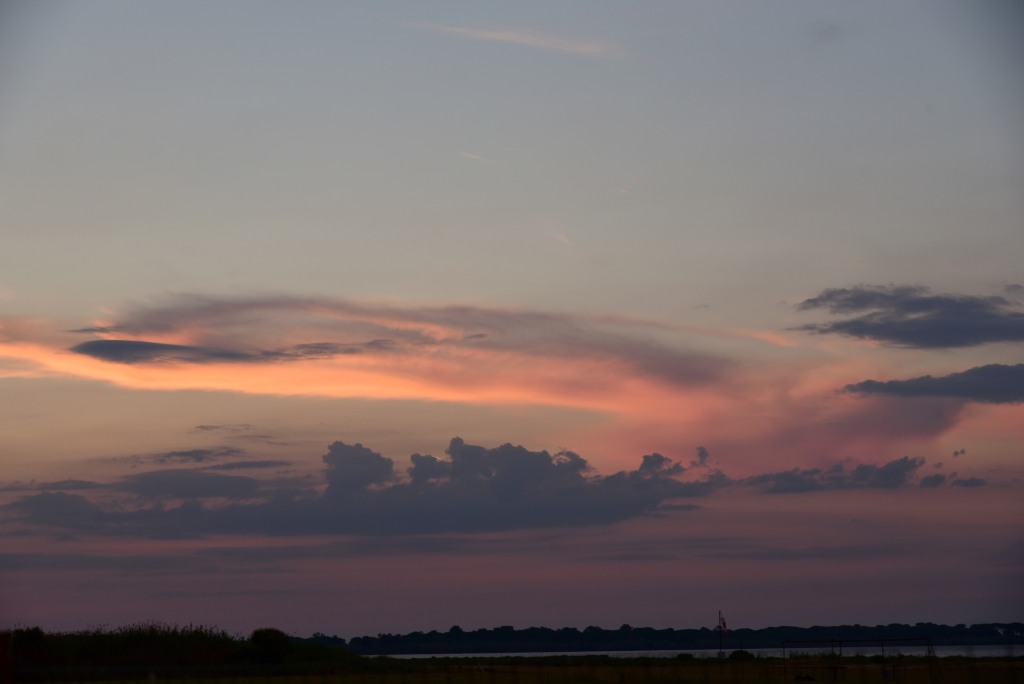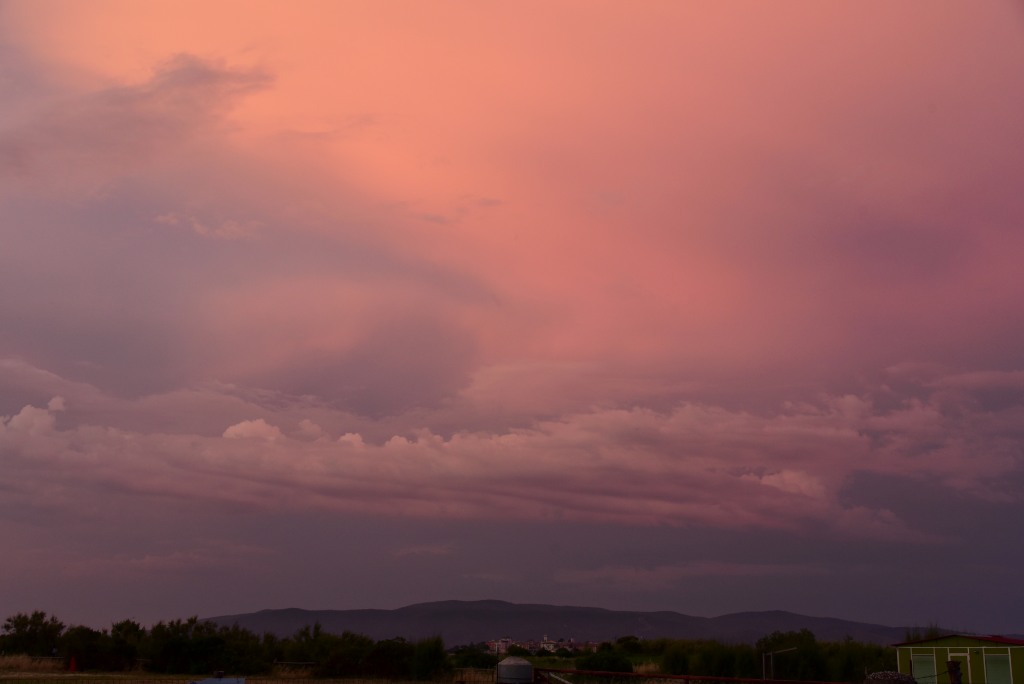June 20, 2018
The journey around the mountainous south side of the island is arduous, if not treacherous, the roads steep, weaving serpentines climbing to soaring heights in the rising heat of the early Mediterranean summer. Attempting to complete this journey on a bicycle with no available shade, no towns to stop off in, no shops to buy anything to drink is probably an altogether bad idea.
The placid sea unfolds around me, small collections of luxurious chalets visible in the distance, as well the ruins of fortifications erected in centuries past to protect the area from marauding pirates. The narrow road winds tortuously along the ridges of the peninsula, the sea far below, the occasional small beaches far below effectively inaccessible due to lack of road access, or the reality of not wanting to have to make the steep ascent on the return to the main road.
Porto Ercole occupies an intimate corner of the Monte Argentario peninsula, on the north side of the promontory facing the mainland. Its narrow alleys weave up a steep hill to its great fortress, built in in the course of the Middle Ages and Renaissance. In the town centre is located the is Palazzo dei Governanti, located on the piazza di Santa Barbara dominating the port, with the fifteenth-century Bastione di Santa Barbara by its side. The town is flanked by striking beaches on each side of the town. Nearby are the sixteenth-century Forte Filippo, the Torre del Mulinaccio and the eighteenth-century Forte Santa Caterina.
The town was founded by Etruscans, conquered by Romans, and subsequently made into a port. In the fifteenth century, the town was annexed by the Republic of Siena, which raised the walls and added some of the towers that can still be seen today along the headland’s coastline.
During the battles between Spain (an ally of Florence) and France (with Siena), Porto Ercole was the scene of the battle known as the Presa di Porto Ercole, depicted by Vasari in the Sala dei Cinquecento at Florence’s Palazzo Vecchio. Just before the battle, the town was strengthened with eight fortifications by Piero Strozzi: only the Fortress remains today.
The painter Caravaggio died in Porto Ercole on 18 July, 1610. Arriving from Naples in a felucca, the painter is said to have been found dying on Feniglia beach and taken to the Church of Sant’Erasmo. His body is believed to have been buried in the old San Sebastiano cemetery, where the new town now stands.
(Narrative paraphrased from www.visittuscany.com)

